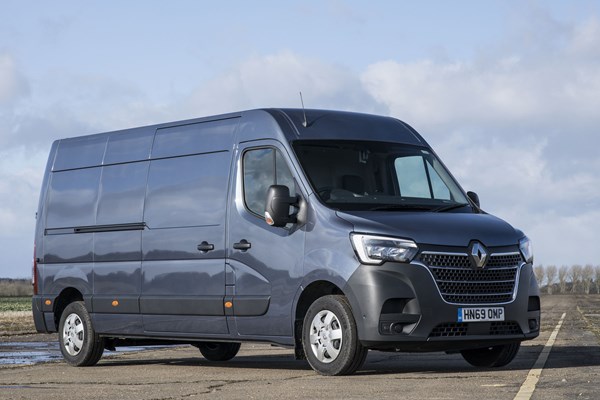Renault Master van review (2023)
Masses of choice and great value from this large van
PROS
- Strong diesel engines
- Payload and space
- Very practical cabin
- Wide range of variants
- Dedicated dealer network
CONS
- One of the oldest vans on sale
- Euro NCAP says to avoid
- Cab not as classy as some
- Rather bumpy ride
- Middling fuel economy
Summary
The Renault Master is a highly versatile large van. Available in a wide range of variants direct from the factory – including a considerable number of specialist conversions – the Master certainly gives you choice. But in 2023, the Master is also one of the oldest vans on the market, and lags significantly behind rivals in the areas of safety and technology.
Despite this, it is one of the few large vans available as a 100% electric model - we cover this in our dedicated Renault Master E-Tech review.
Originally launched back in 2010, it was heavily facelifted in 2019 (as pictured below), including a new-look front end, revised engines and overhauled interior.
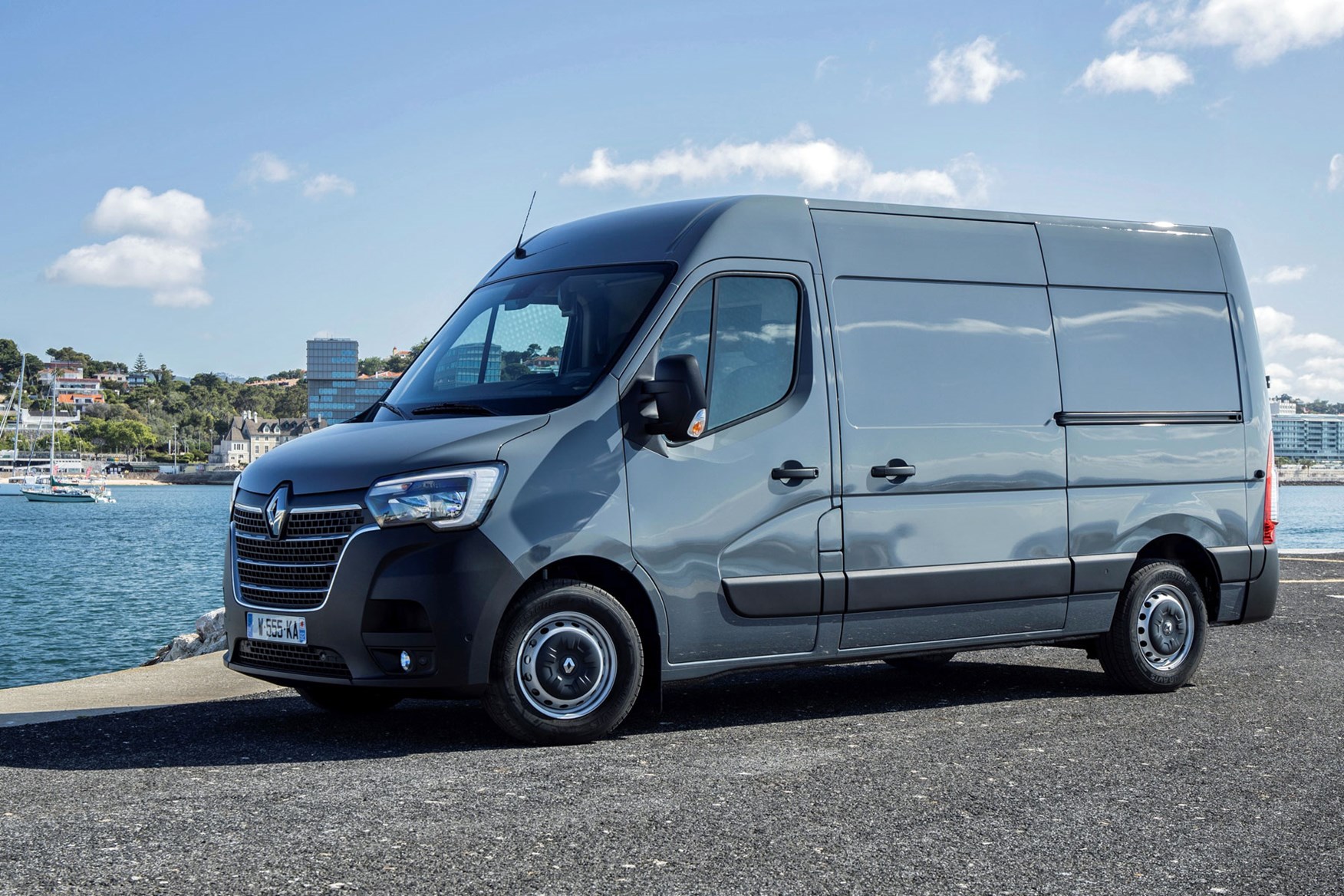
But while driving this is a reminder that the Master remains a decent van from behind the wheel, as well as one that offers plenty of versatility and payload, the difference between this and the most modern rivals is increasingly stark.
This review covers the 2019 onwards model and earlier versions.
2019 Renault Master facelift
In September 2019, Renault started selling a significantly facelifted Master, which includes not only a new look at the front but also a fully revised cab interior as well.
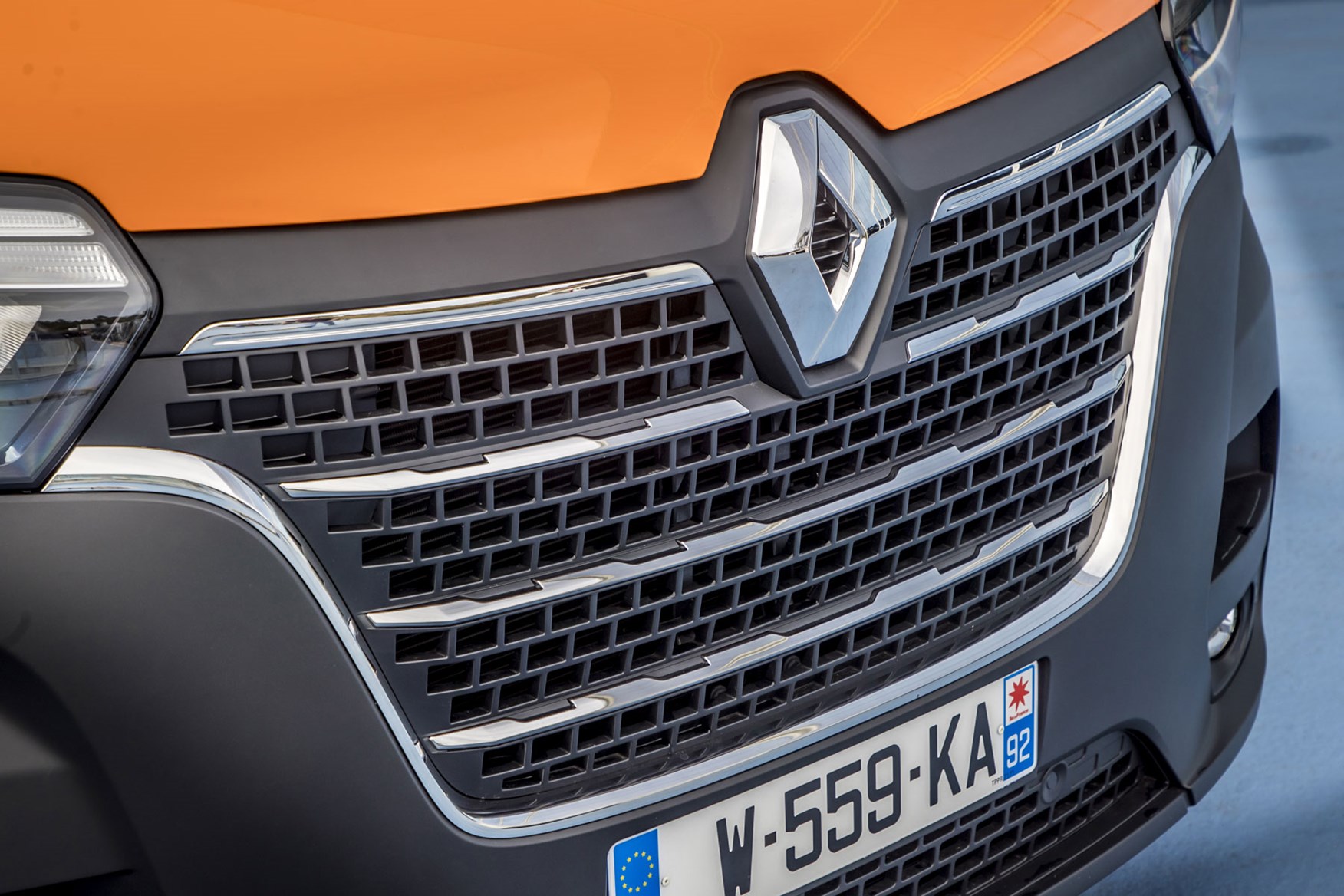
The changes at the front of the van are deliberately intended to make it look more 'truck-like' - which Renault feels will make customers think it is tougher. As such, the grille is now not only adorned with chrome but also more upright, with a higher bonnet.
These modifications also help the engines breathe better, contributing to their update to Euro 6D Temp (also known as Euro 6.2) emissions standards (heavy-duty versions comply with Euro VI D). They were then tweaked again in 2022 to meet Euro 6D's final requirements, but this didn't impact power outputs.
Meanwhile, the new interior is much smarter and more modern than before, and although there's not much of an increase in standard safety equipment, there are at least more options now.
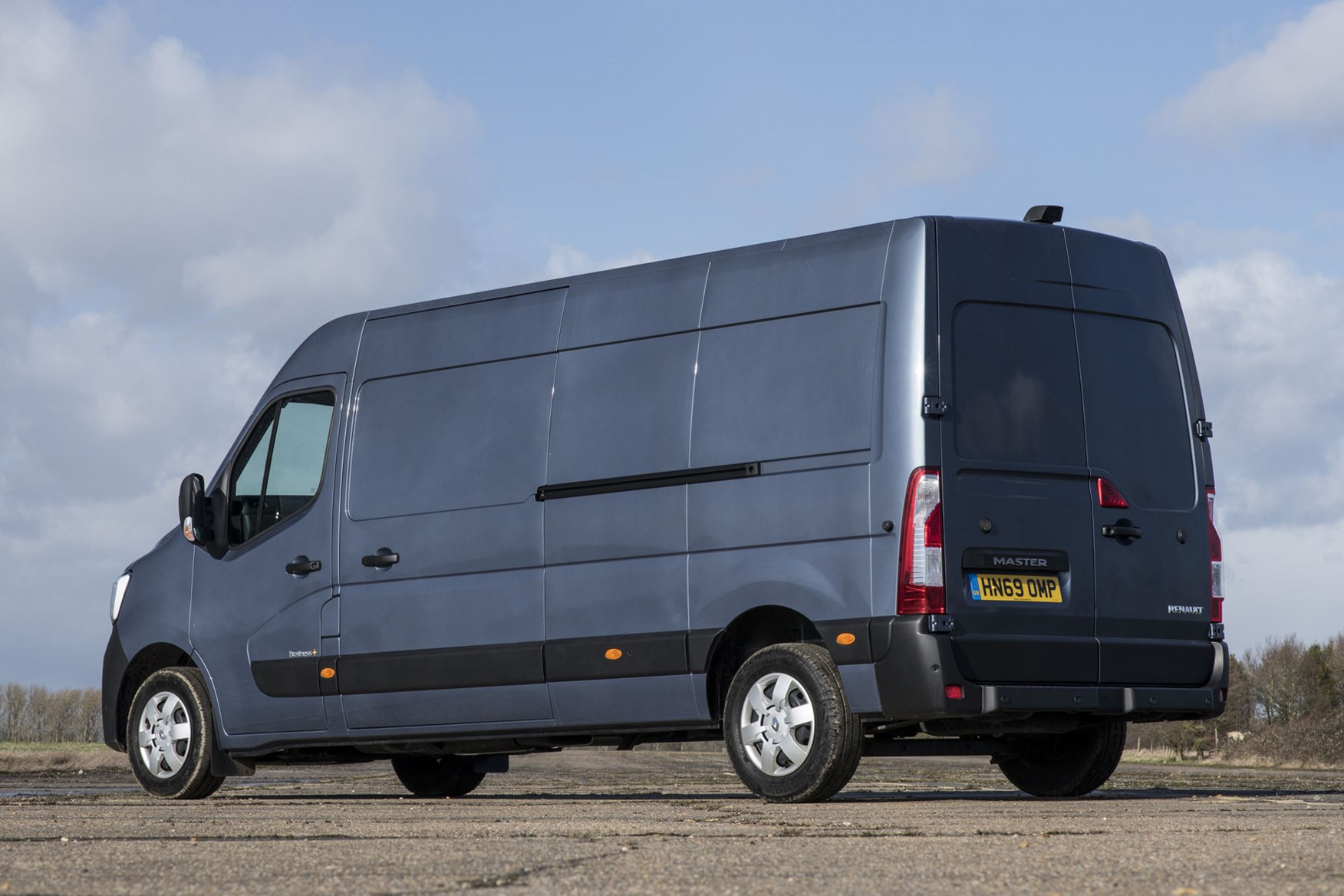
On a less immediately positive front, the number of available Master variants has been substantially reduced as part of this update - though there are still 99 of them. This is partly an effort to cut back on the models that don't sell so well, partly an attempt to make it easier for customers to pick the most suitable Master for them, and partly the result of those new emissions regulations.
Body sizes and variants
The Master panel van range comes in four body lengths and three body heights, and with the choice of front- or rear-wheel drive. It offers highly competitive levels of space and payload, as well as a selection of powerful turbodiesel engines.
The cab is spacious, comfortable and apparently built from tough materials. Only the slightly bumpy ride may let it down on longer journeys – though this settles down a great deal once you’ve got some weight in the back.
You get plenty of standard equipment for your money, too, with the latest versions coming in a choice of Start and Advance specifications.
Renault Master rivals
Its closest rivals are perhaps the Citroen Relay / Peugeot Boxer / Fiat Ducato trio – though most buyers are likely to find the 2014-onwards Ford Transit near the top of their shopping list as well.
Verdict: is the Renault Master any good?
Supported by the dedicated Renault Pro+ light commercial vehicle (LCV) dealer network, and created by a firm with 120 years of van-building experience, the Master does a good job of straddling the line between performance and value.
With high payload capability, strong engines and a practical cab, it has lots to recommend it – and you’re almost certain to be able to find a version in the pricelist to suit your needs.
Newer rivals do offer a better driving experience and a lot more safety kit, but you’ll also find the very best of these cost more than the Master as well.
For information on payload and carrying capacity see our dedicated Renault Master Dimensions page, or keep reading for our full review.
Skip to our full verdict on...
- Strong (if noisy) engines with up to 180hp
- Choice of front- or rear-wheel drive
- Good turning circle but bumpy ride
The Renault Master driving experience as all about the impressive engines. Ride comfort could be better, but as a big commercial vehicle it still covers long distances in relative comfort.
It also offers a choice of front-wheel drive (FWD) and rear-wheel drive (RWD), so you can specifiy the drivetrain that best suits your needs.
Renault Master engine choice
Every version of this generation of Master has been powered by a 2.3-litre dCi turbodiesel engine, right from launch in 2010. A good, tough, motor with plenty of muscle in every guise, it has nonetheless gotten better over time.
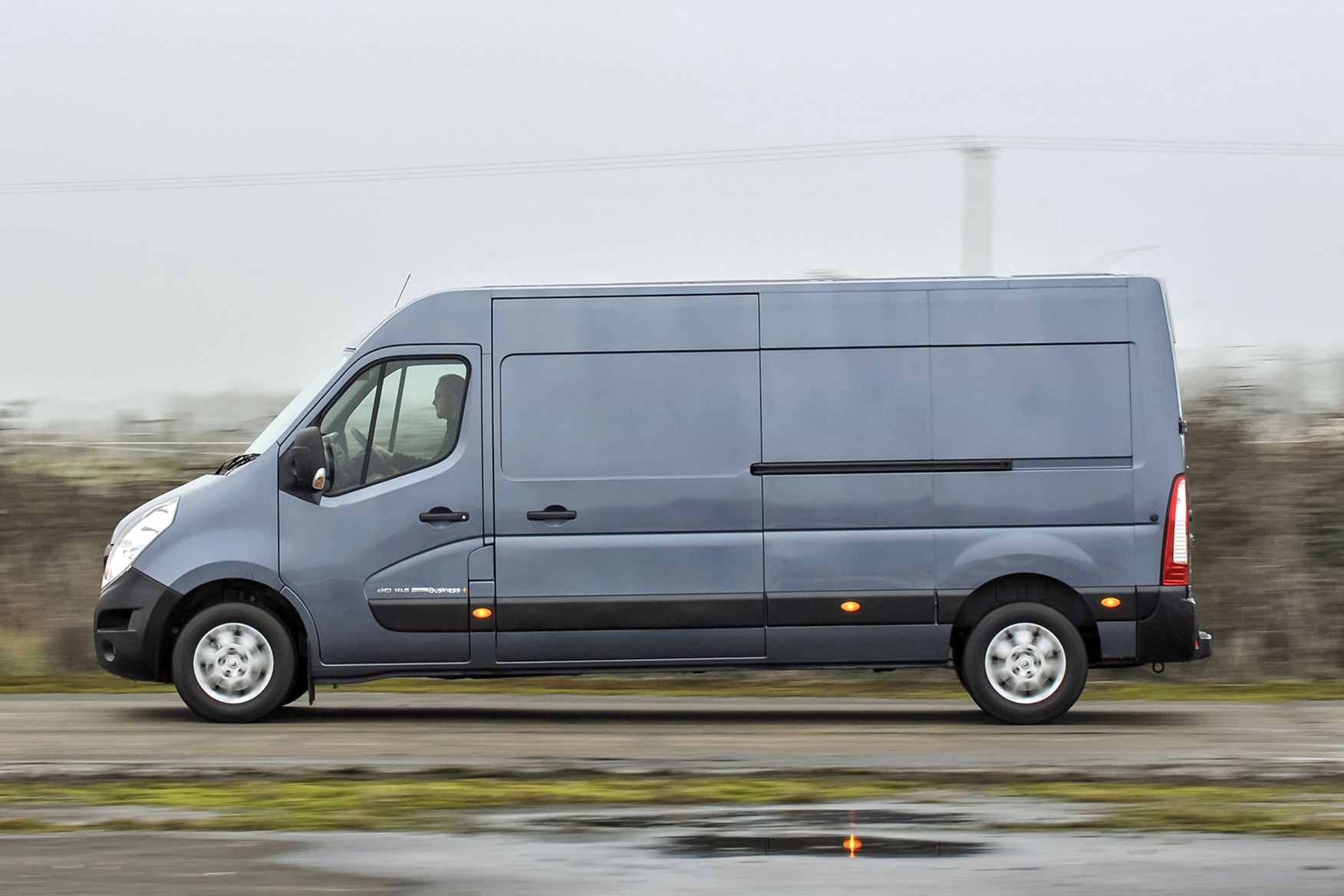
Initially launched with a choice of 100hp, 125hp or 150hp, in 2014 this line-up was improved to offer the following combinations:
- 110hp / 285Nm single-turbo (in standard and fuel-saving Energy specification)
- 125hp / 310Nm single-turbo (standard specification only)
- 135hp / 340Nm twin-turbo (Energy specification only)
- 165hp / 360Nm twin-turbo (Energy specification only)
The main fuel-saving measure for the Energy models is stop-start technology.
In 2016, the Master’s engines got upgraded again, this time to meet Euro 6 emissions regulations – which involved the addition of a selective catalytic reduction (SCR) system to reduce harmful NOx emissions. This is in line with every other large van (except pre-2019 versions of the Fiat Ducato), and means there’s now an AdBlue tank to keep topped up.
Renault Master engine outputs after the 2016 Euro 6 update are as follows:
- 110 hp / 285Nm (in standard and Energy specification)
- 130hp / 310Nm (standard specification only)
- 145hp / 340Nm (Energy specification only)
- 165hp / 360Nm (Energy specification and rear-wheel drive only)
- 170hp / 380Nm (Energy specification only)
So you can see that the Euro 6 engines are largely more powerful than their predecessors, which partially compensates for the slight increase in kerbweight caused by the additional emissions control hardware.
However, these were updated again for 2019, as the Euro 6 standard became even tougher.
Renault Master engine outputs after the 2019 update are as follows:
- 130hp / 330Nm (standard specification, RWD only)
- 135hp / 360Nm (standard specification, FWD only)
- 145hp / 360nm (Energy specification, RWD only)
- 150hp / 385Nm (Energy specification, FWD only)
- 165hp / 380Nm (Energy specification, RWD only) - not coming to the UK
- 180hp / 400Nm (Energy specification, FWD only)
As you can see, the latest front-wheel drive models offer more power and torque than their rear-wheel drive counterparts; in our experience so far, they also have a much nicer action to the standard six-speed manual gearbox, which becomes quite difficult to use in some RWD applications here.
The FWD version is pleasingly mechanical in its action, in fact, with a really robust feel - not something you'd necessarily say about the manual gearboxes on Renault's smaller vans.
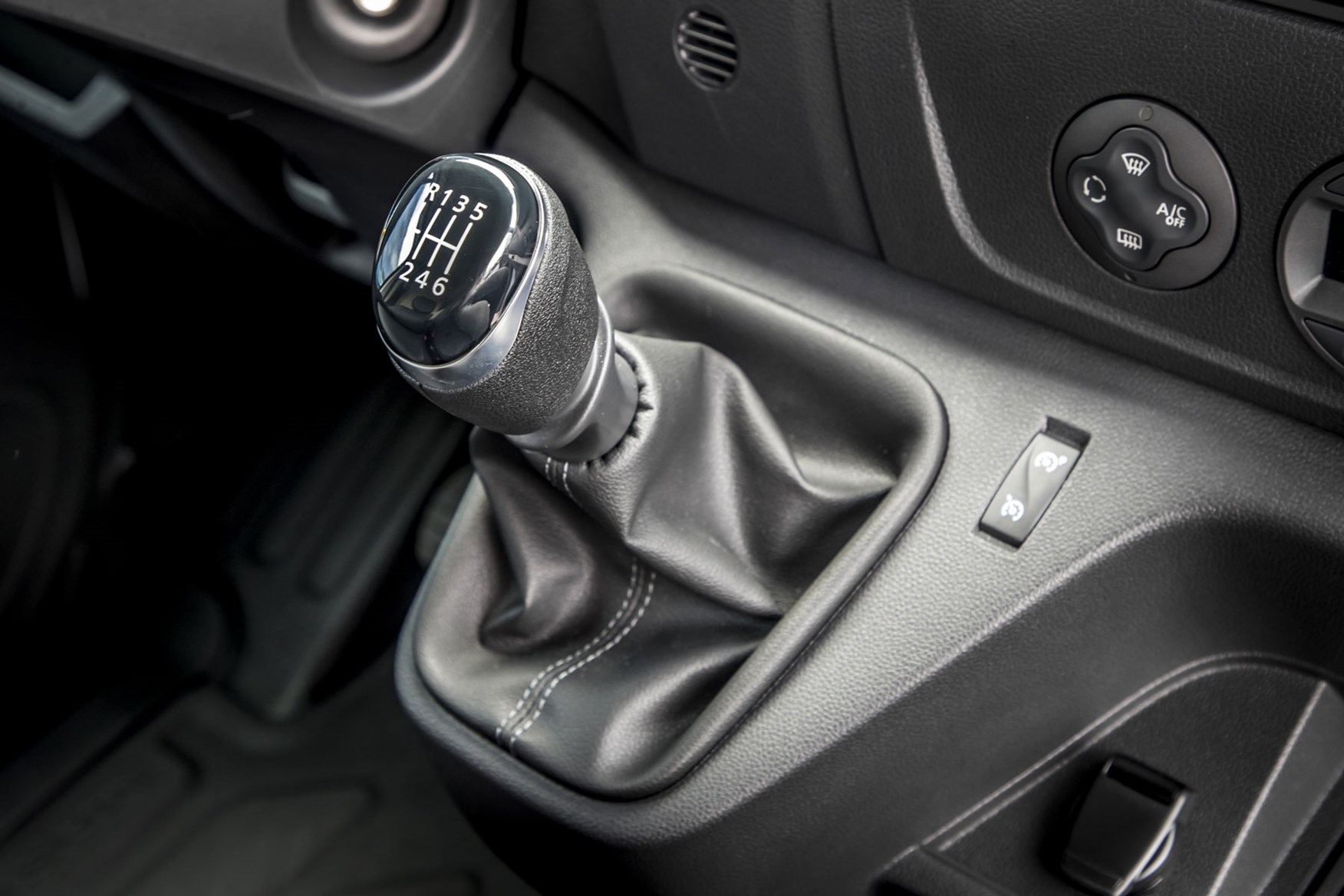
However, in the RWD vans' favour, they suffer from far less in-cab vibration than the newest RWD Sprinter and Crafter models - which is a big plus for the Renault.
The Master's engines aren't especially quiet, though, so you may need to raise your voice when chatting to your mates in the cab.
A six-speed Quickshift automatic transmission is optional on some models, but this is a robotised manual rather than a true auto, so isn't the most pleasant experience.
What’s the Renault Master like to drive?
Whatever engine output you choose you’ll find the Master's 2.3-litre powerplants are strong, gutsy motors with plenty of low-down muscle. And while the entry-level versions obviously aren’t going to be as happy at their maximum payload as the most powerful versions at the top of the range, they will still get the job done.
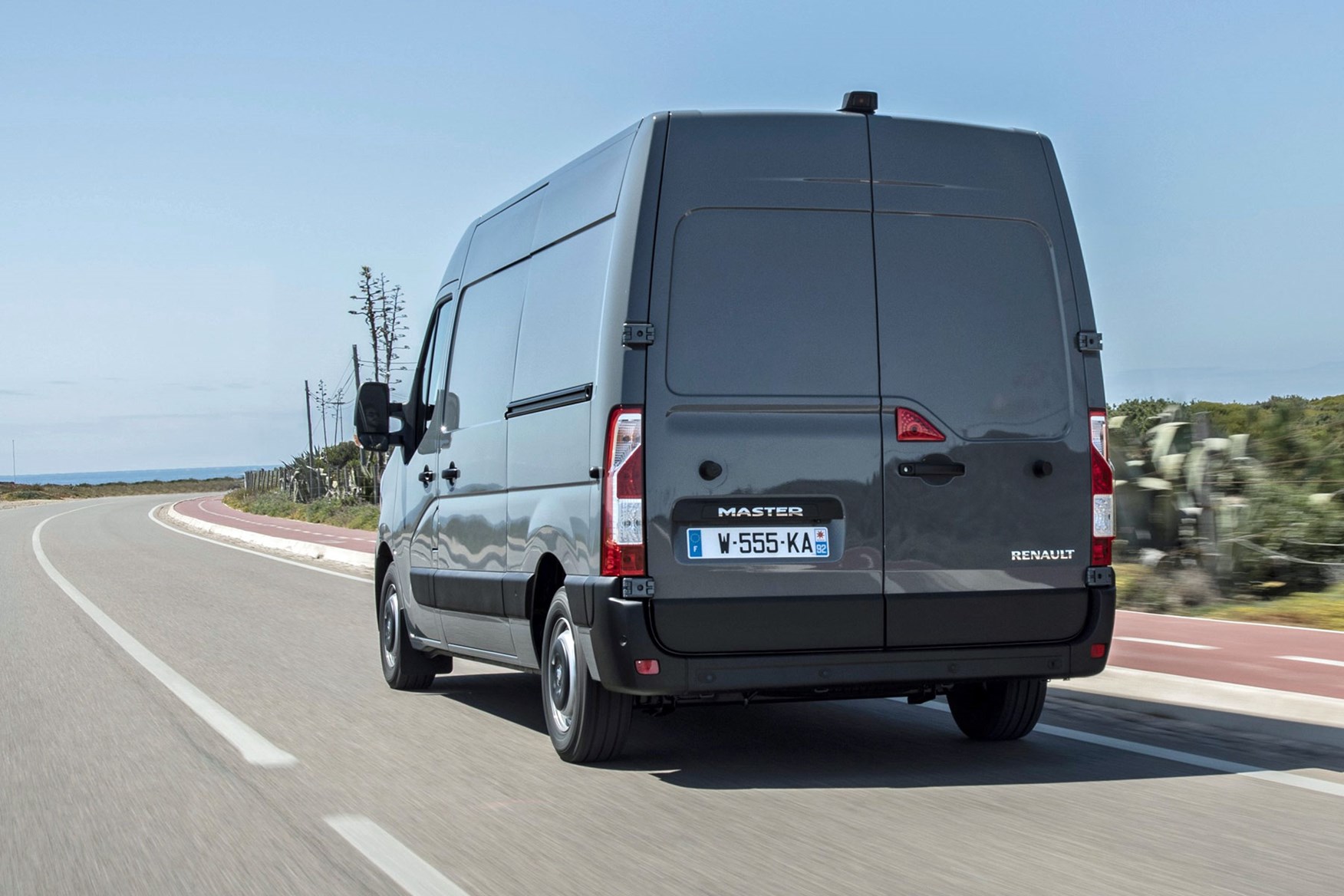
The latest 180hp range-topper is a real monster, though, so if you're looking for a powerful FWD van this is a good choice. It feels substantially punchier than the 165hp RWD model, even.
Managing the Master’s potentially vast size is easy enough, too. The steering is light, and the front wheels turn a long way, giving this large van a surprisingly nimble turning circle.
That said, the long wheelbase can still catch you out, especially if you're not so familiar with driving large vans.
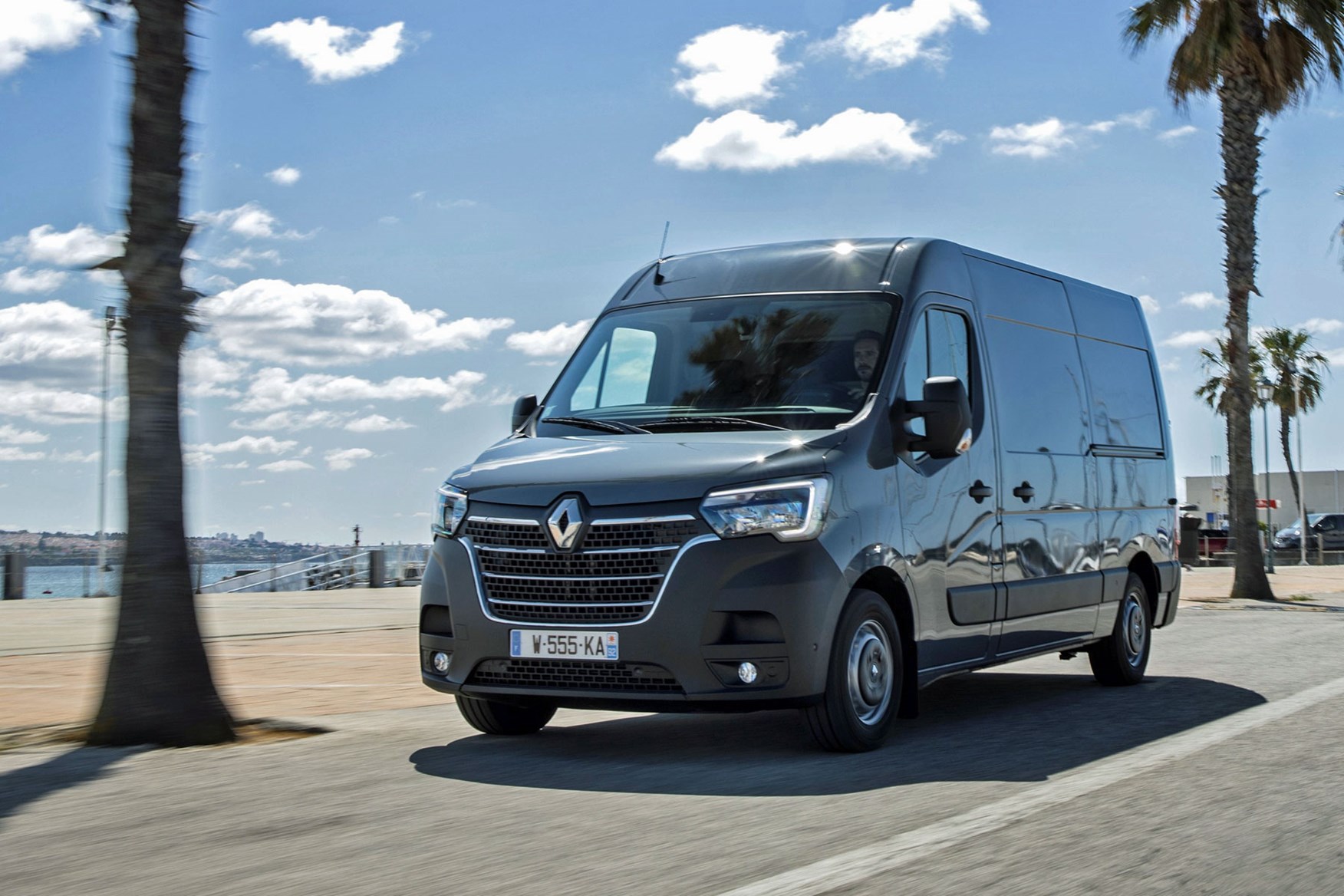
Older verions aren't as stable in a straight line on the motorway as some more modern rivals, meaning you have to concentrate more, which can be tiring. But the 2019 update does add side wind assistance technology as standard, which should help with this, and you can get a lane-departure warning system to keep you on track.
Is the Renault Master comfortable?
The ride is rather bumpy – again especially compared to an ultra-modern rival such as the Crafter or the Sprinter – but this does settle down once you’ve got some weight in the back. And since few people are likely to drive a large van around unladen that’s probably the main thing.
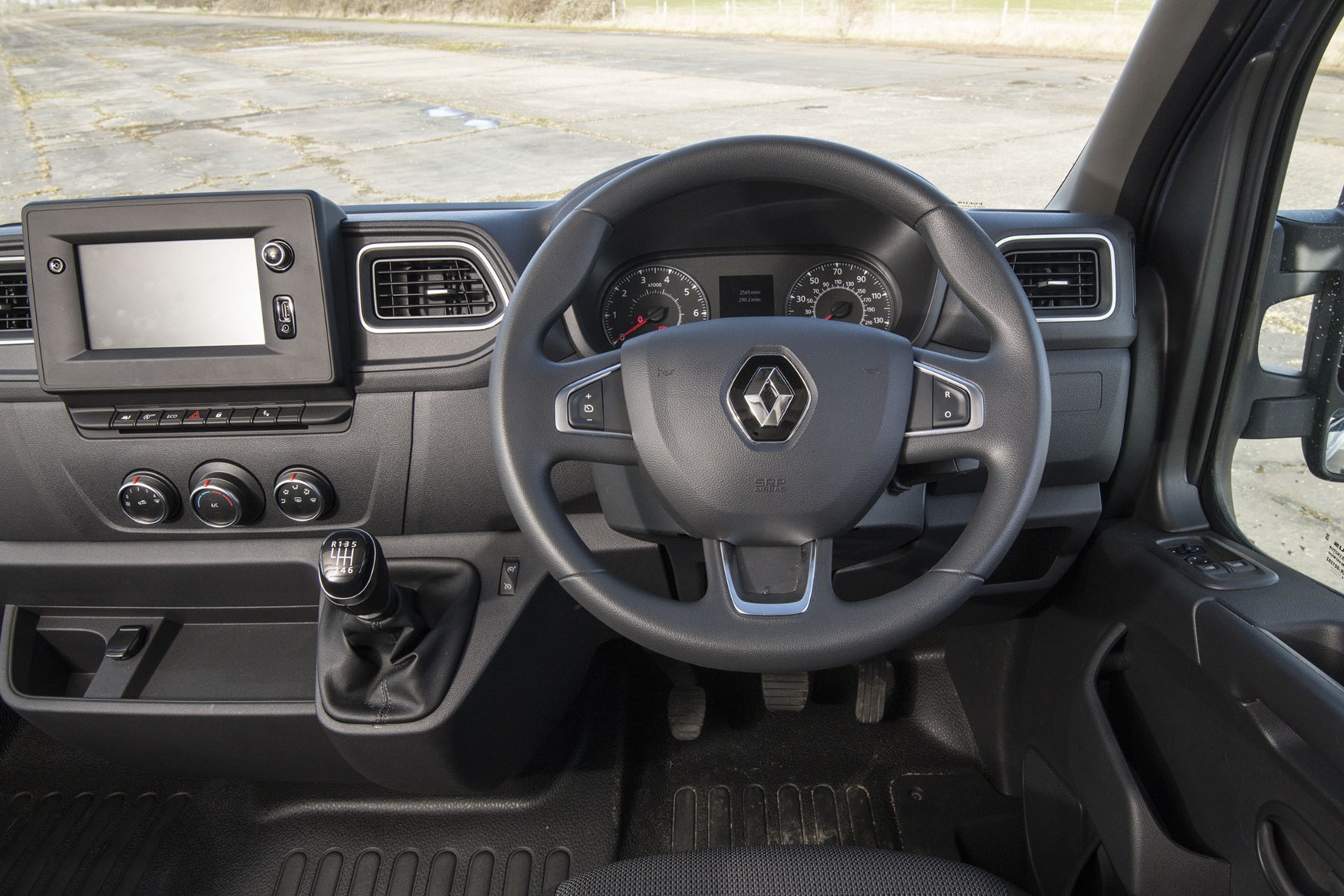
Forward visibility is fine – the dashboard is low and the high seating position gives you a commanding view, as you’d expect. But the small quarterlight windows at the side and the angled door mirrors seem to quickly get filthy in poor weather. Remember to clean them before you set off.
What's the Renault Master E-Tech electric van like to drive?
We have a separate Renault Master E-Tech review, which covers this in great detail..
- Hugely improved interior from 2019, though all models feel built to last
- Lots of storage and some clever features, especially for mobile office use
- New 2019-onwards permanent rear-view camera option worth considering
From launch, this Renault Master doesn’t have the most premium-looking interior compared to some competitors, with rather too much greyish-brown plastic for our liking. But the 2019 update brought a completely overhauled dashboard design, which car-like features, plenty of storage and a more modern look.
Regardless, whatever this Renault lacks in luxury it makes up for with durability, and gives every impression that it should stand up to the daily rigours of being a work van.
Renault Master infotainment through the ages
Standard equipment is generous throughout the range. For example, from 2014 onwards almost every model is fitted with satellite-navigation.
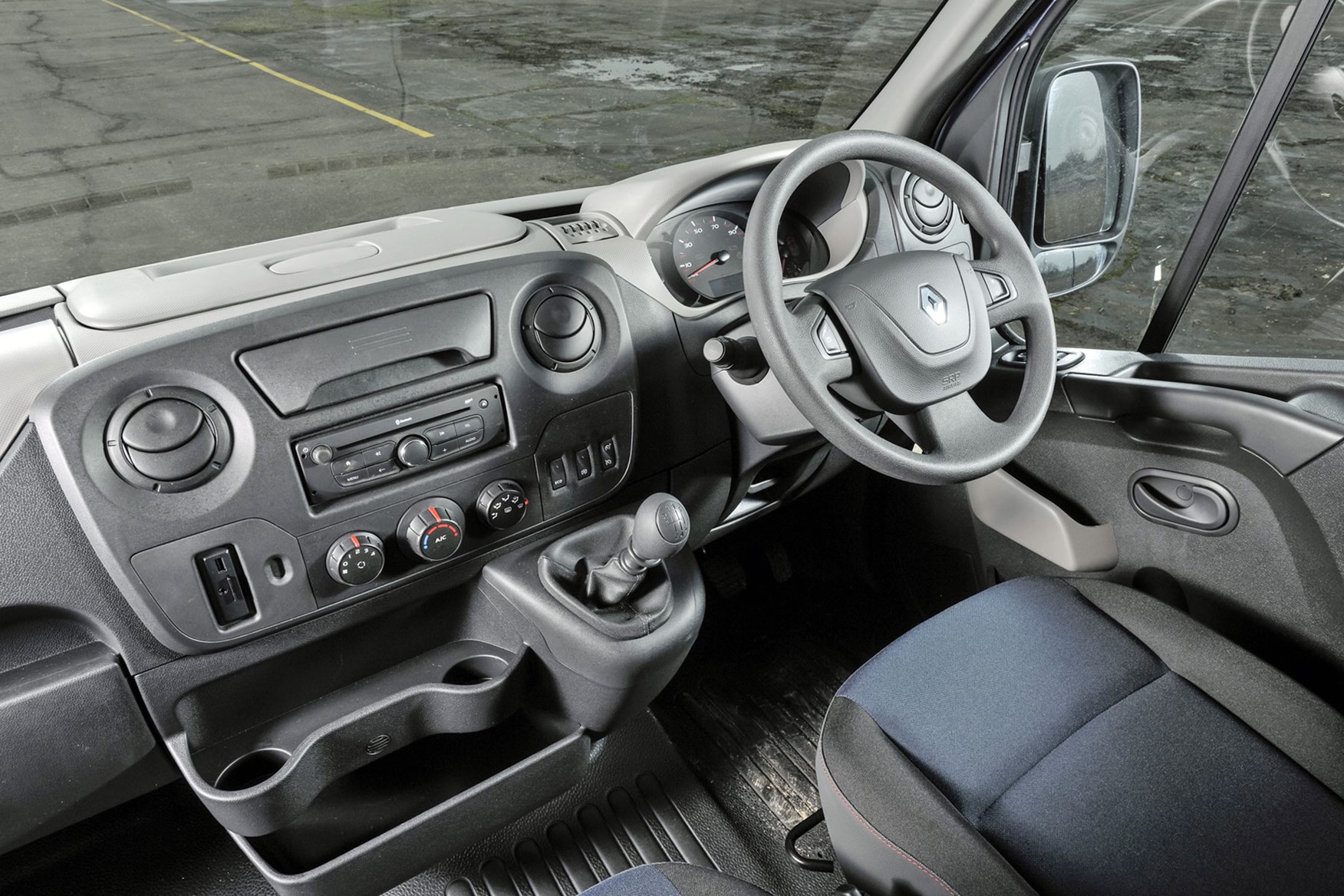
Only the entry-level versions (previously called Freeway, currently called Business, in line with the rest of the Renault van range) miss out – though the basic standard system can still be upgraded to a more modern R-Link infotainment setup, as used in Renault’s passenger cars.
Go for the R-Link, and instead of taking up space in the centre console, the sat-nav touchscreen gets moved to where the rear-view mirror would be in a conventional car, allowing you to keep it in your eye line without looking too far from the road. Clever.
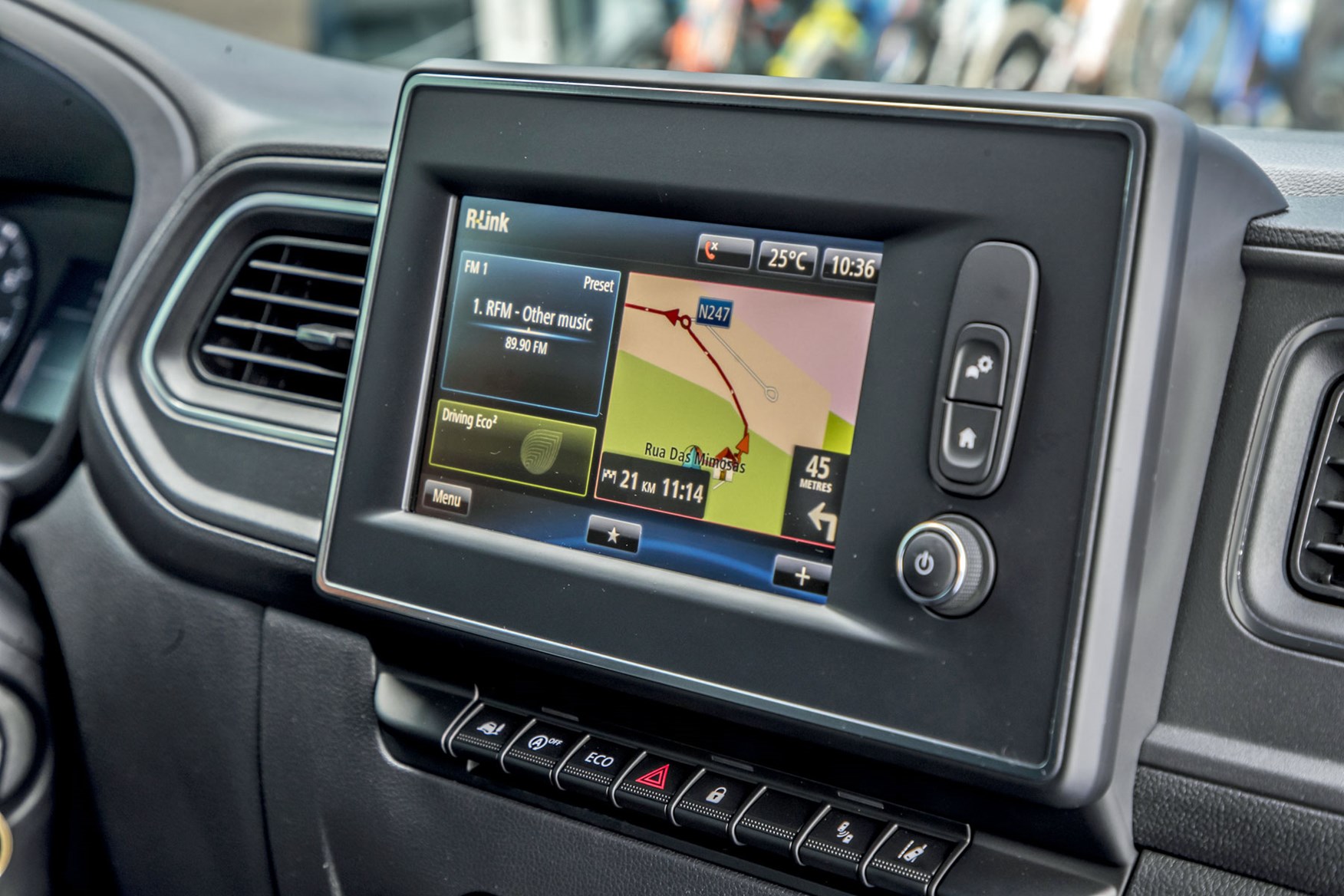
For 2019, the infotainment systems were upgraded again, with all versions featuring Android Auto, and the fanciest version working with Apple CarPlay as well.
A DAB radio with USB connectivity and Bluetooth has also been standard on all models since 2014.
Built to make your working life easier
There’s more cleverness in features such as the fold-down centre seatback, which functions as a mobile desk complete with swivelling laptop tray, and the clipboard that pops out of the top of the dash. You can also get a mobile phone holder that mounts next to the instrument cluster, near to a power socket.
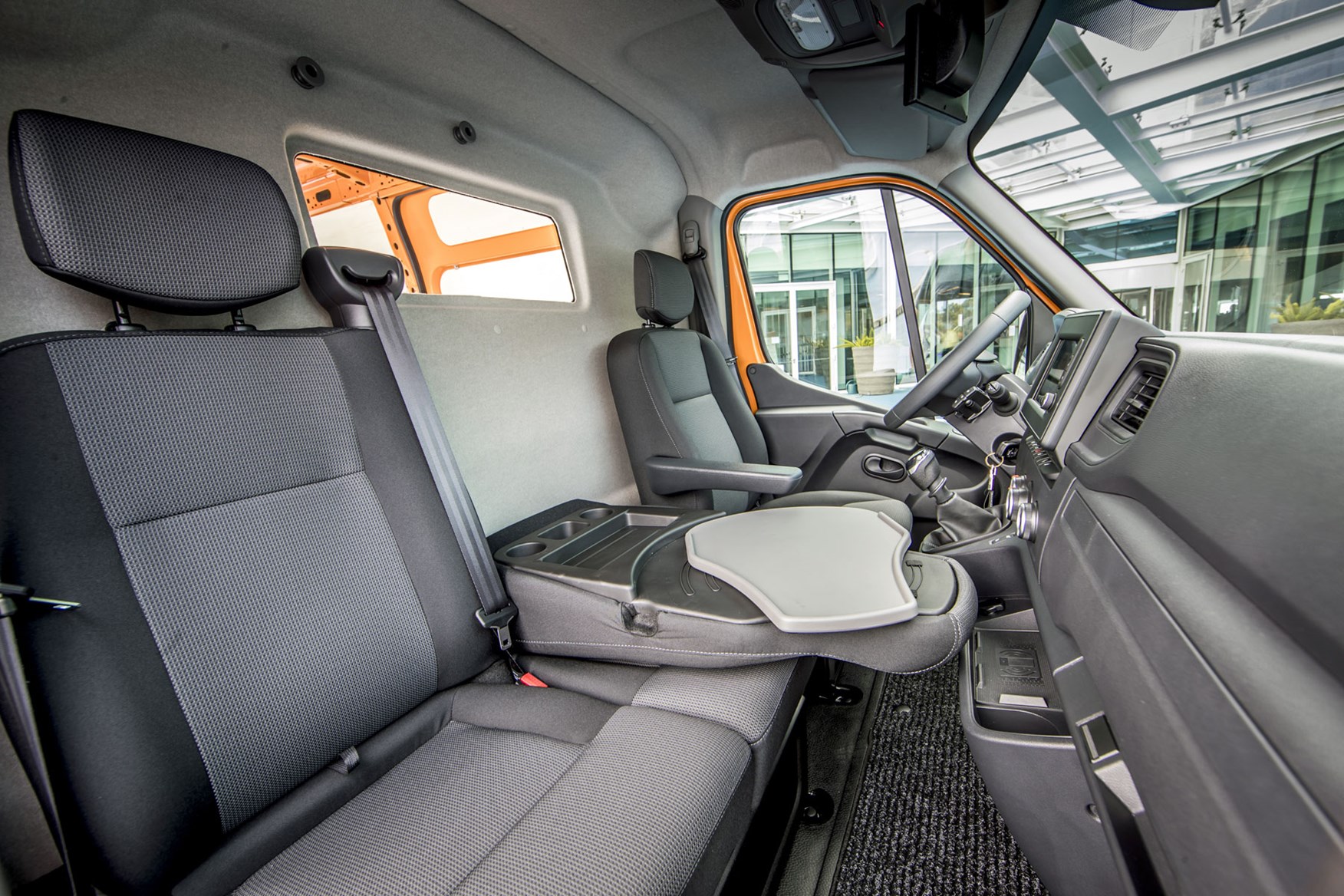
The sense that real thought has gone into the cabin design in order to make your working life easier continues as you explore the vast array of available storage.
There’s a full-width parcel shelf above the windscreen, 7.6-litre glovebox with enough room to hold two 1.5-litre bottles, and door compartments that are also big enough to hold a 1.5-litre bottle
There are also a number of smaller compartments with card holders, coin holders, four drinks holders and stowage in the dashboard big enough to carry A4 documents. Plus a vast stowage area under the passenger bench seat.
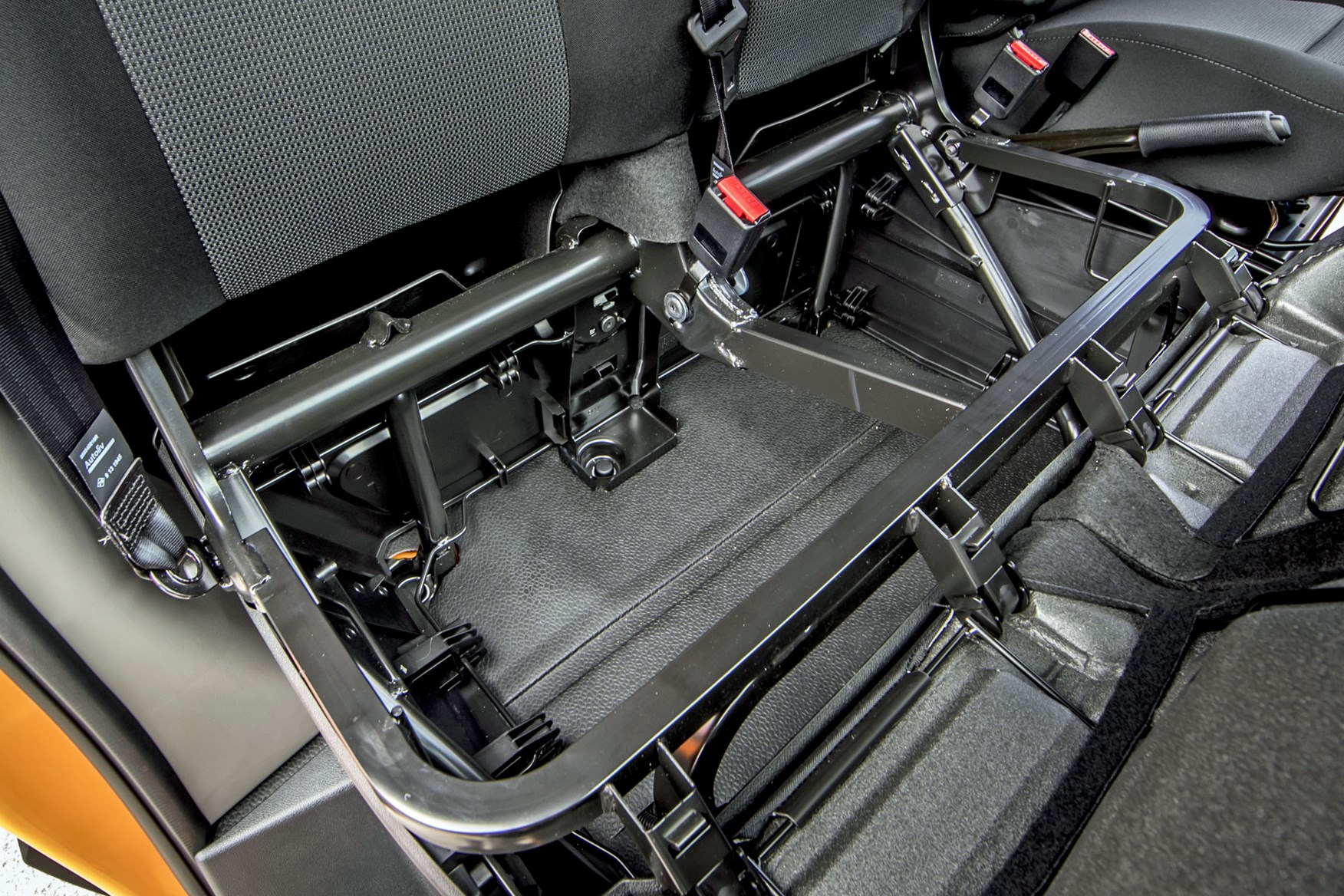
The seats are comfortable making long journeys more bearable, and the driver gets an armrest, too.
2019 interior upgrade
From July 2019 production, the Master's cab nevertheless takes a big step forward, with a completely new and much smarter-looking dashboard design.
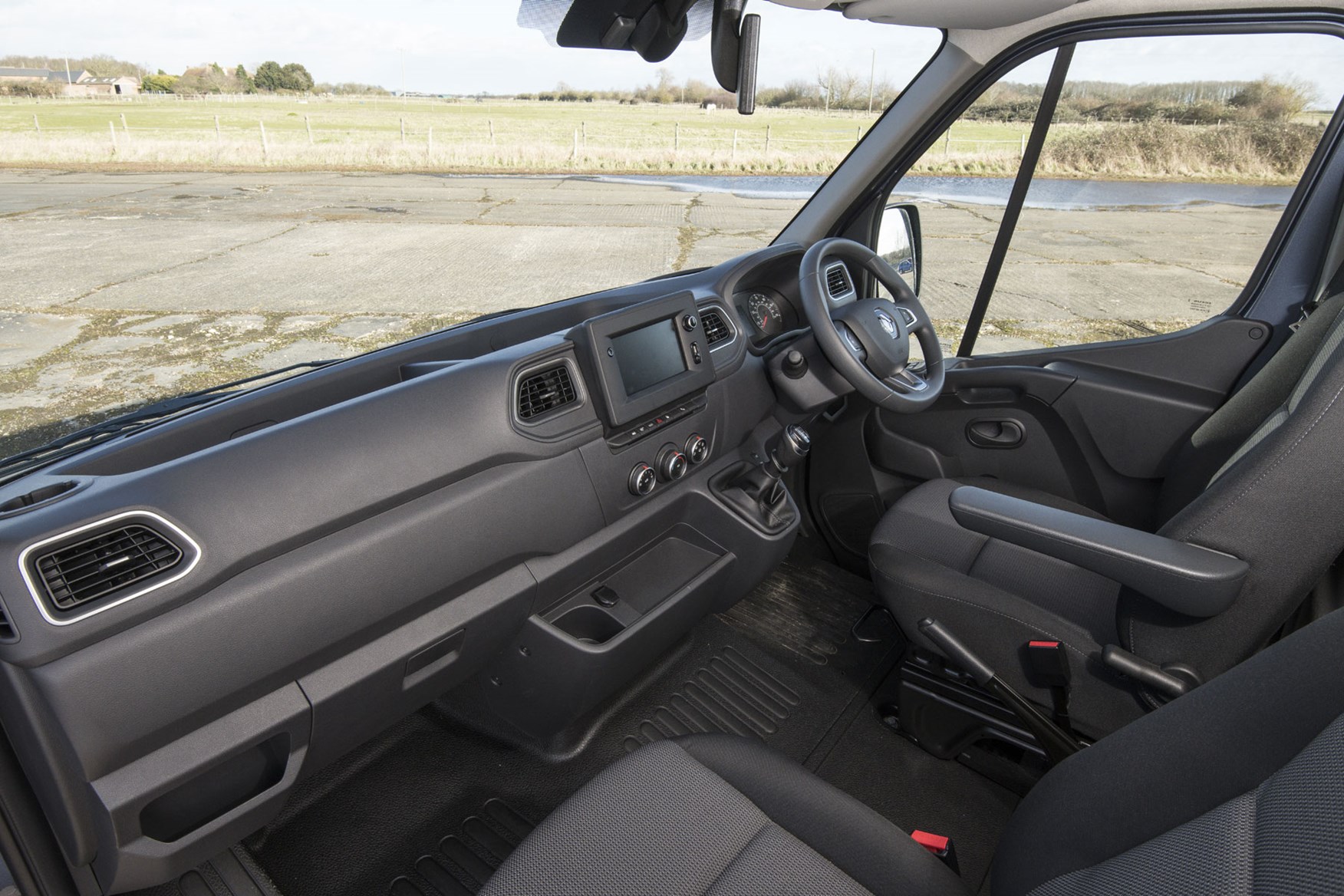
Stand-out features of this include properly integrated infotainment screens (where fitted), and dash-top storage areas complete with hinged lids - something the VW Crafter could well do with emulating (since the lack of covered storage is the biggest weakness in what is the benchmark-setting large van interior in all other respects).
Material quality is better than ever, and Renault has switched a single dark colour for the entire cabin, ditching the rather unpalatable light grey sections of the previous dashboard design.
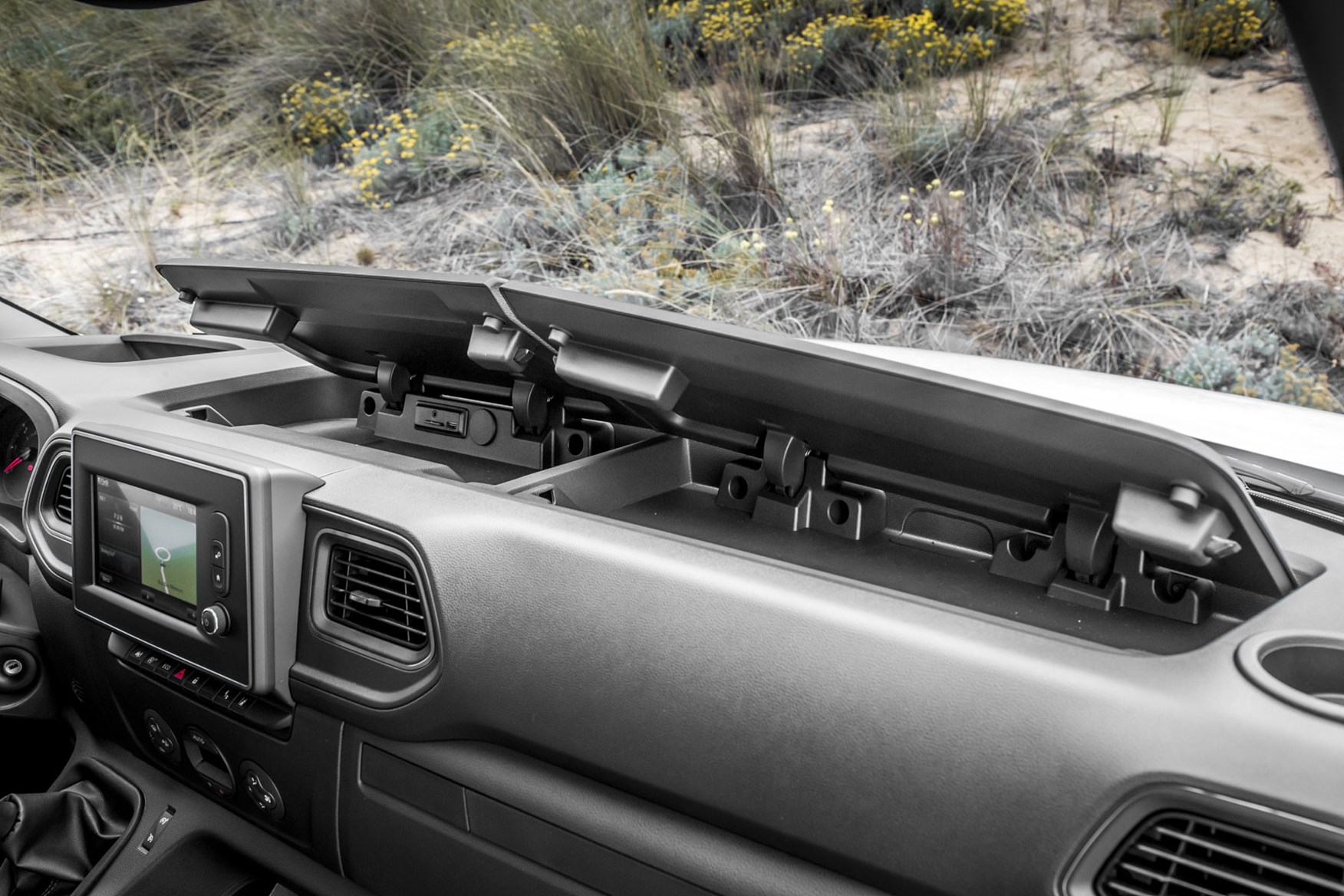
What's more, the upholstery is said to be harder-wearing, so the Master's cab should stay looking better for longer.
Sadly UK buyers miss out on some new features available in Europe, including a drawer-style glovebox and pop-out lunch shelf / desk, because these haven't been made available for right-hand drive models.
New rear view camera for 2019
Another major change for the 2019 model was the option of a permanent rear-view camera, with a screen positioned where the interior rear-view mirror would be in a regular car.
The Master was the first large van to feature such a system - though it's subsequently been made available to the Vauxhall Movano, and follows the introduction of a similar system in the Citroen Berlingo / Peugeot Partner / Vauxhall Combo small van family.
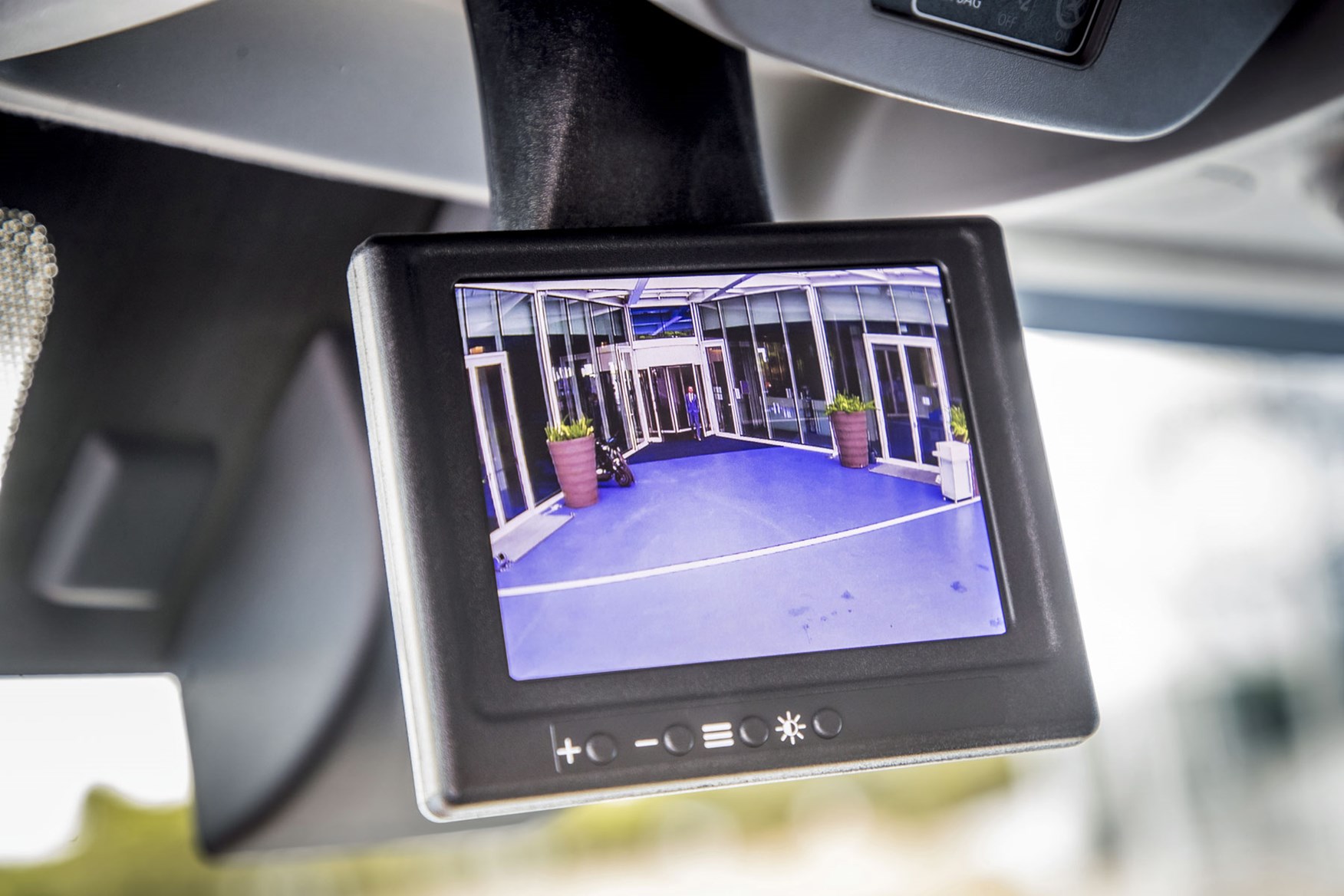
Gladly, it seems to work better in the Master than it does in those small vans (which suffer with poor image resolution), though we're yet to test it at night. It also isn't as easy for your eyes to focus on as a conventional rear view mirror, and can be a little difficult to see through some sunglasses. Still, a useful feature to have on a large vehicle with no other rear visibility options.
Interestingly, the optional reversing camera for parking is a different one, and its slightly wider-angle view is shown on the infotainment screen.
For further information on the current range of Renault Master standard equipment see the Costs section of this review.
- Good value, with decent standard equipment
- Dedicated dealer network
- Average warranty and service intervals
The Master consistently delivers good value for money – in terms of its cargo-carrying capabilities, its standard equipment and its running costs.
At the start of 2023, there is a three years / 60k servicing package included on Hire Purchase and Lease Purchase and 3 Years / 60k Service, Maintenance and Tyres package on Contract Hire.
Renault Master mpg
The Master's official fuel economy rating is all around the 30mpg mark, with the most efficient of the front-wheel drive models managing 32.1mpg and the least dipping down to 28.5mpg. The outliers are the rear-wheel-drive versions, which only manage an official figure of 21.1mpg, so are the ones to avoid if economy is a priority and you can do without the abilities of rear-wheel drive.
Renault Master warranty
A three-year, 100,000-mile warranty is standard – though for a period Renault did increase this to four years of cover and it has also been five years at a time as well. Check what your van came with if you are buying used - for example, in March 2021, Renault launched a '5-Year Pro+ Promise' offer that added a five-year / 100,000-mile warranty and servicing plan, and five years of roadside assistance to its five-year 0% HP finance schemes. This ran until 30 June 2021 on vans registered before 30 September 2021.
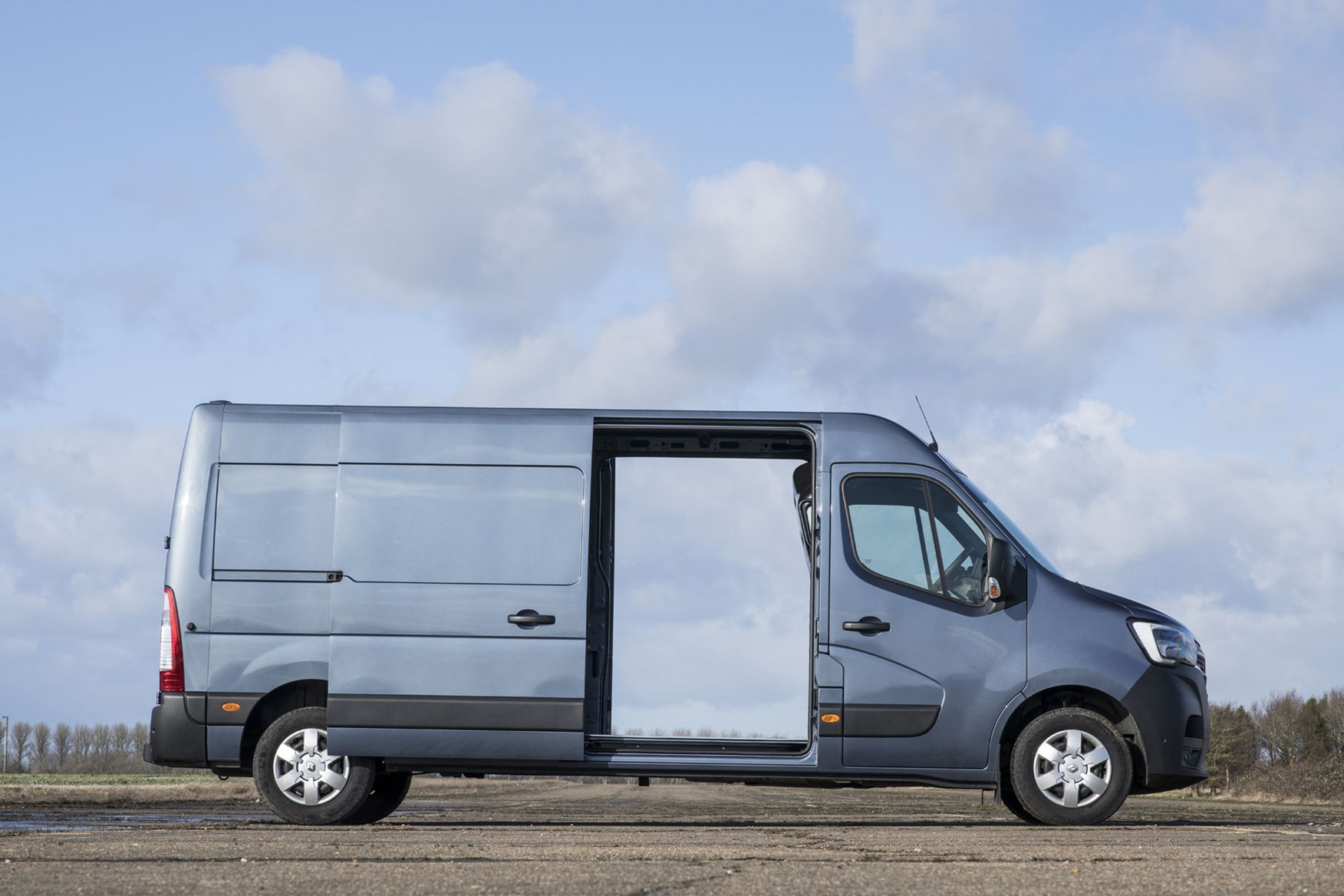
In February 2018, the four-year warranty was abandoned in favour of an optional EasyLife Plan servicing scheme, which gives buyers cost-effective payment choices for maintenance instead,
Renault Master service intervals
Service intervals are every 25,000 miles or two years, whichever is sooner.
This is starting to look a little short compared to the very latest large van rivals that can supposedly cover over 30,000 miles between dealer visits.
Renault Master standard equipment
The current Renault Master range consists of two standard equipment levels: Start and Advance, which replaced the previous Business and Business+. The name was about all that changed when the update happened, and here’s what you get for your money.
Renault Master Start standard equipment highlights:
- DAB radio with USB connection, Bluetooth and CD player
- Full steel bulkhead
- Alarm, immobiliser, deadlocks and remote locking
- Electric front windows
- Electric, heated door mirrors
- Height-adjustable steering wheel
- Driver’s seat with height and lumbar adjustment
- Passenger bench seat
- Overhead parcel shelf
- Load anchorage points (six for L1, eight for L2, 10 for L3 and 12 for L4)
- Rear step (RWD only)
Renault Master Advance standard equipment highlights (in addition to Start):
- Wide view mirror in the passenger sun visor (reduces blindspot)
- Rear parking sensors
- Keyless go
- Built-in clipboard
- Air-conditioning
- Additional lidded storage
- Driver's seat with suspension and arm rest
- Pivoting seat-back table with dual split underseat storage
- 12v power socket in load area
- Chrome trim on front grille
A limited run Formula Edition was also introduced in late 2017, celebrating the link between Renault vans and the French brand's Formula 1 team.
This came with extra kit including cruise control as standard, plus a number of bespoke styling details, including lots of black paint and yellow detailing. It’s an acquired taste, and you can read a review of it towards the bottom of this page.
Despite the poor reputation of older Renault models, the French manufacturer has worked hard to improve this and there is little evidence of serious issues with this generation of Master.
As evidence of the improved build quality, for example, we count fewer than 10 official safety recalls since it was launched in 2010 (some modern vans have seen more than that in a single year...).
And although a few of these have been quite serious, the number of vehicles potentially impacted has always been quite small - for instance, one related to a possible turbo pipe failure that could cause a fire, but only 55 Masters in the UK needed to be checked for this.
If buying new you do get breakdown cover that matches the length of the warranty period, for added peace of mind.
- Limited amount of standard safety equipment
- All new models get an alarm, side-wind assistance
At launch, Renault claimed the Master had the shortest stopping distance of any van in its class – but that was back in 2010, and in safety terms the sector has moved on massively since then.
Generally speaking, the Master offers the bare minimum of standard safety equipment, with more available via the options list. In fact, the standard of active safety kit is so low, Euro NCAP actually rated the Master as a van to avoid in the first round of its van safety campaign.
Renault took this rating seriously, though, and upped the safety kit on the Master to the extent that it was upgraded to a Bronze rating in 2022, but this is still some way behind the current best in class, which is the Platinum rated Fiat Ducato.
Renault Master safety equipment
On earlier examples, electronic stability control (ESC) was only standard on rear-wheel drive models – but it is now fitted right across the range as part of the basic asking price. This includes hill-start assist, trailer stabilisation and Renault’s Grip Xtend feature that works to improve traction on low grip surfaces.
You get a single airbag, with up to three more optional if you want them.
Similarly, while handy features such as cruise control, automatic lights and wipers, and lane-departure warning are available, they only come at extra cost (4.5-tonne variants do get lane-departure warning as standard).
Crosswind assist was, however, made standard as part of the 2019 upgrade (Renault calls it side wind assistance), but previous to this it wasn't available at all.
Vans built from July 2019 also get the option of blindspot monitors, autonomous emergency braking (AEB) and front parking sensors for the first time, too; rear parking sensors and a reversing camera were already available. In 2022 the lane-keep assist and speed assistance systems were amended, which helped the Master perform better in Euro NCAP's testing, but it is still lagging behind the rivals.
There's also a new permanent rear view camera system - discussed in the interior section of this review, above.
Renault Master security
All versions of the Master are now fitted with an alarm and immobiliser as standard – though as ever you may wish to consider upgrading these features if you regularly have no choice but to leave valuable items inside the van.
Renault has various options available to assist you with this.
Which Renault Master is best for me?
Still trying to decide which Master van is best for you? Here's a little more info that might help.
Renault Master: front-wheel drive or rear-wheel drive?
The simple guide is that front-wheel drive (FWD) Masters are lighter (good for payload) and cheaper (good for your wallet), while the rear-wheel drive (RWD) Masters offer improved traction when fully loaded or towing, and promise to be generally tougher, making them more suitable for heavy duty work.
Similarly, you'd pick twin rear wheels if your Master is set for a particularly hard life with lots of journeys near its payload limit.
Bear in mind that the rear-wheel drive models have significantly worse fuel economy, though, so it shouldn't be a choice you make lightly.
Which Renault Master engine is best?
Most buyers opt for a middle-spec power output. Though we have to say we found the 180hp FWD model very appealing for its performance, the extra running costs and buying expense probably isn't worth it for most buyers.
Similarly, we'd avoid the least powerful models as they will be more stressed (and stressful) in real-world driving. Though from the 2019 model update, the minimum power levels are increased, so there's no need to be so wary of those.
Renault Master individual model variant reviews
Looking for more information about individual Renault Master models? We've driven the folowing versions:
- Renault Master Formula Edition review - tested February 2018
- Renault Master LM35 dCi 165 FWD review - tested June 2015
Renault Master Formula Edition review
Tested February 2018 by CJ Hubbard
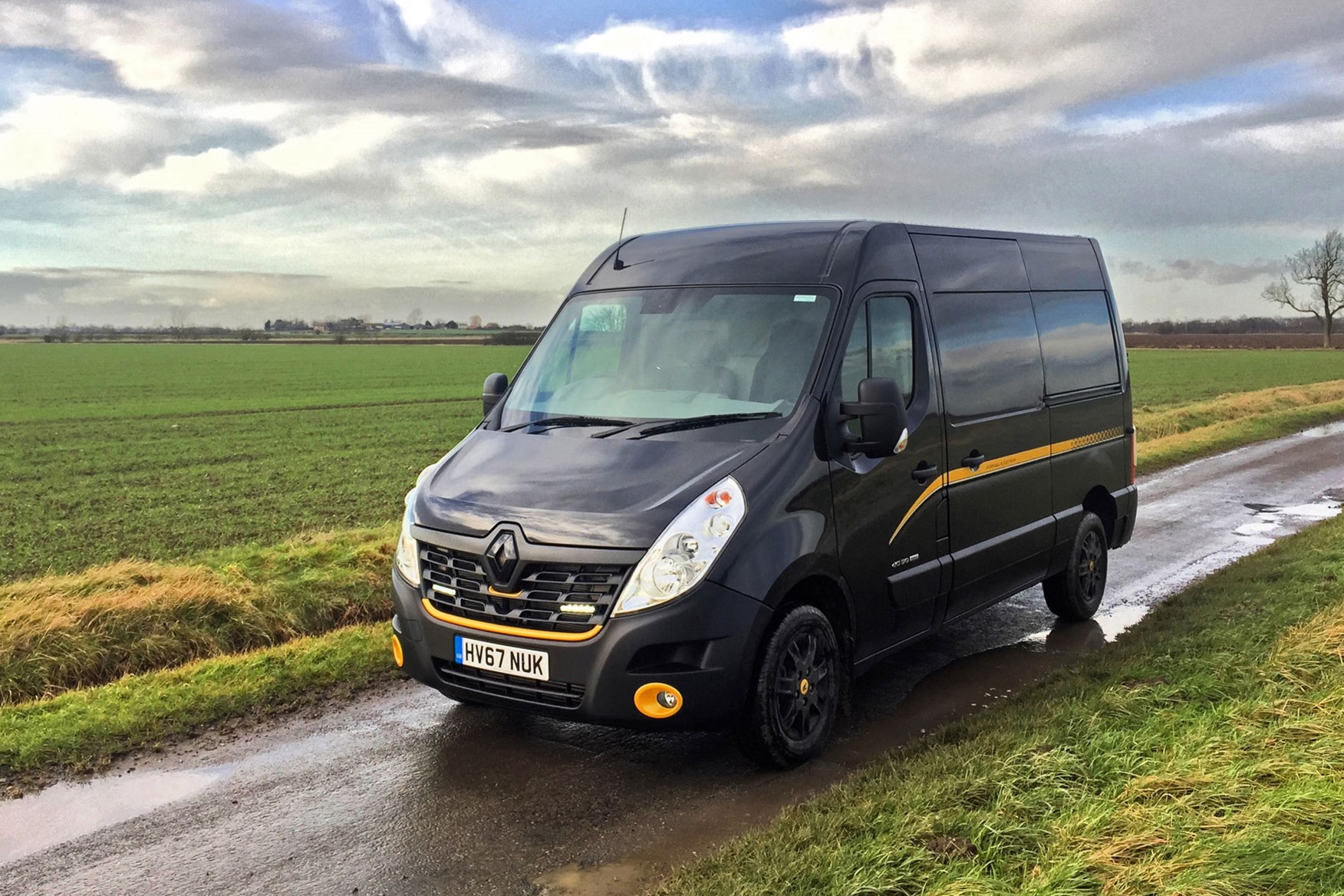
Sportier vans are becoming increasingly popular of late and, as tenuous as the link to F1 may seem with a van of this size, the Renault Master Formula Edition’s black and yellow-accented paint job confirms it as a limited edition associated with the French marque’s racing efforts.
Does that mean it’s fashioned out of carbonfibre and other exotic materials? No. Will it out-drag a performance saloon thanks to an expertly fettled high performance engine? Err, not exactly. Are you likely to feel like Nico Hulkenberg every time you get behind the wheel? Oh, please...
Eye-catching detailing
As sporty light commercial vehicles go, the Master is actually in a club of one. Despite the popularity of sporty Ford Transit Customs and Volkswagen Transporters, neither manufacturer has upped the go-faster ante on their large van ranges.
Inevitably for some F1 fans, the Formula Edition Master doesn’t look enough like a replica of the racing livery, but all that blank space gives scope for any branding the owner wants to apply to remain clearly visible.
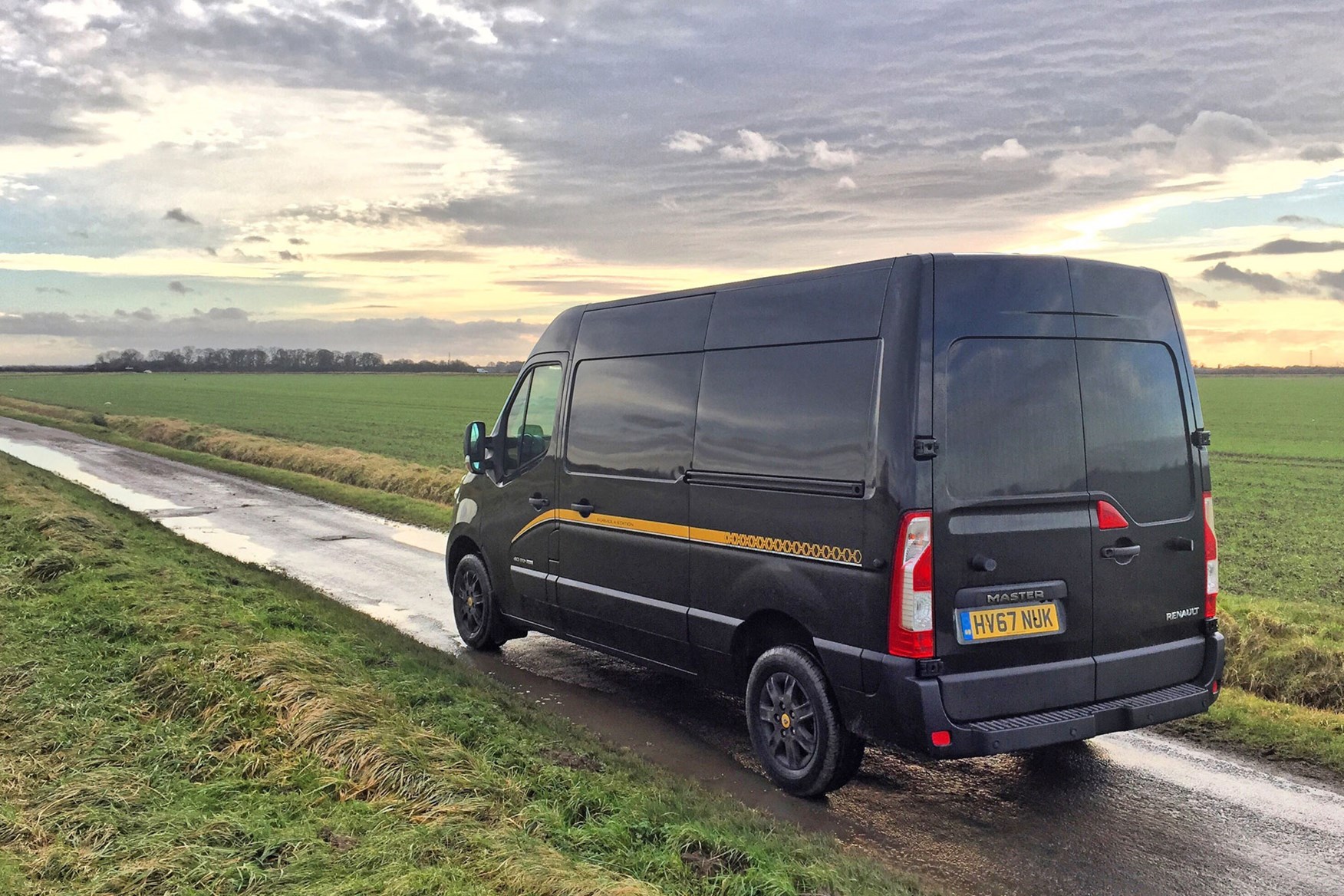
Many of the details around the exterior are well-judged, but the LED day-running lights set into the grille look a little Halfords to our eyes.
What you’re more likely to notice is what’s not there – there are no deep spoilers or sill extensions – the Master’s an exercise in subtlety. Aside from those yellow flashes…
Talking of which, inside it’s disappointingly ordinary with no sunny trim additions or appliques to liven-up the austere cabin – perhaps after 100,000 miles of heavy use and grime they’d turn grey like the rest of cab anyway.
Is the Renault Master Formula Edition faster than normal?
Forget notions of extra performance in the Master Formula Edition. It packs the same twin-turbo 2.3-litre diesel – dCi 170 in Renaultspeak – as others in the range. That means you’ve 170hp to deploy, with 380Nm of torque available from 1,500rpm, the latter useful on a motorway where you can keep it in sixth gear and still swiftly overtake trucks.
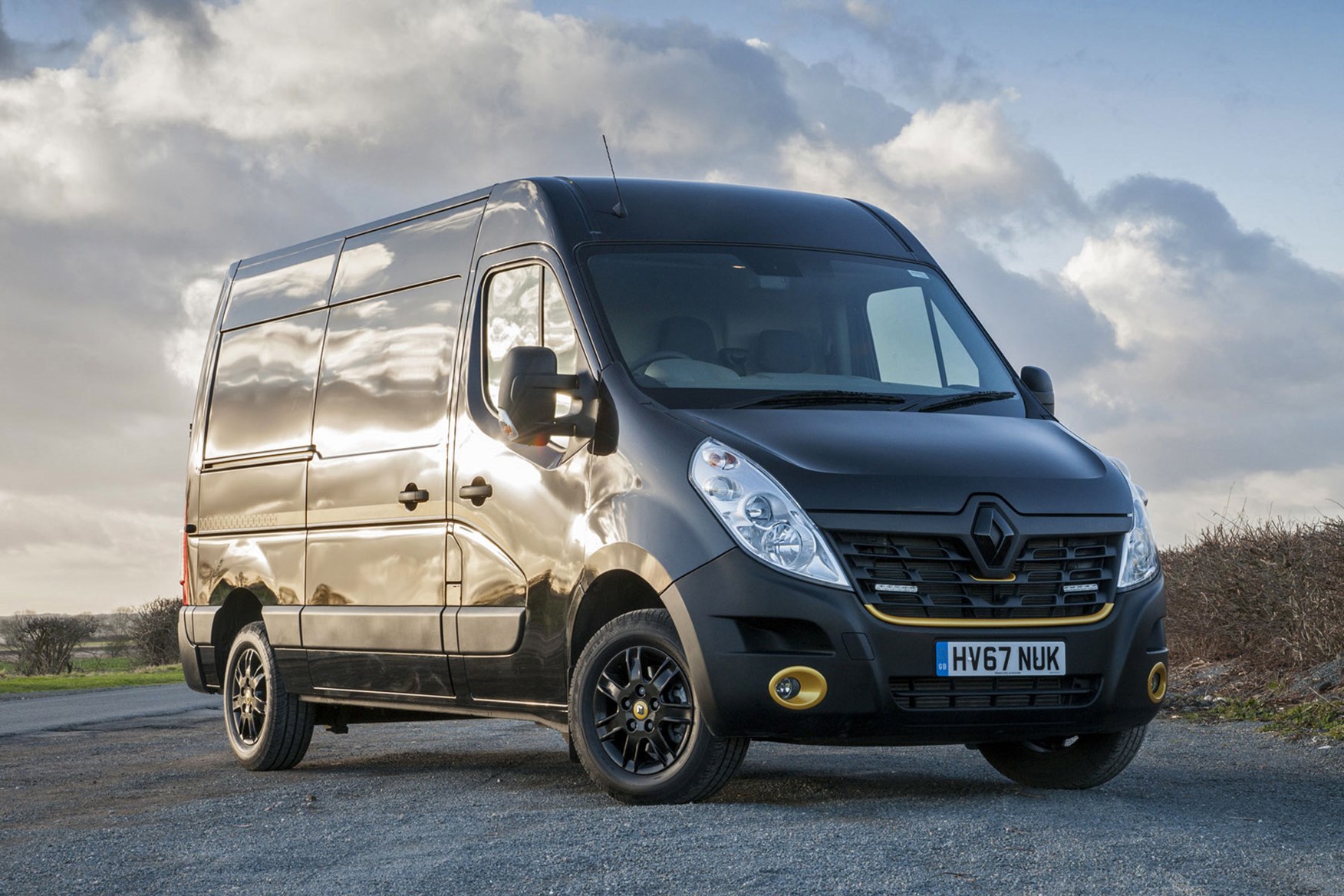
Its top speed of 100mph is somewhat academic, but the 0-62mph time of 11.4 seconds feels swift for a van of this size. Certainly your sense of performance is increased by being sat so high up.
How good is the Renault Master Formula Edition to drive?
If you’re hoping that the Master will share much of the smaller Trafic’s fine driving qualities, then you’re in for a disappointment.
Sure, you don’t buy a capacious van to have outright enjoyment behind the wheel, but newer alternatives such as the Ford Transit and VW Crafter – it’ll be safe to add the third-generation Mercedes-Benz Sprinter to the list in due course – feel more refined, quiet and car-like.
But while engine noise penetrates the Master's cab at motorway speeds, this can be forgiven to some degree thanks to its torquiness – even a heavy load in the back does little to dent its urgency.
Adding weight in the rear helps settle the ride down too – it’s a bit too fidgety and unsettled when the cargo bay’s empty, lending it a tendency to feel nose-heavy and push wide if you take sweeping bends at pace.
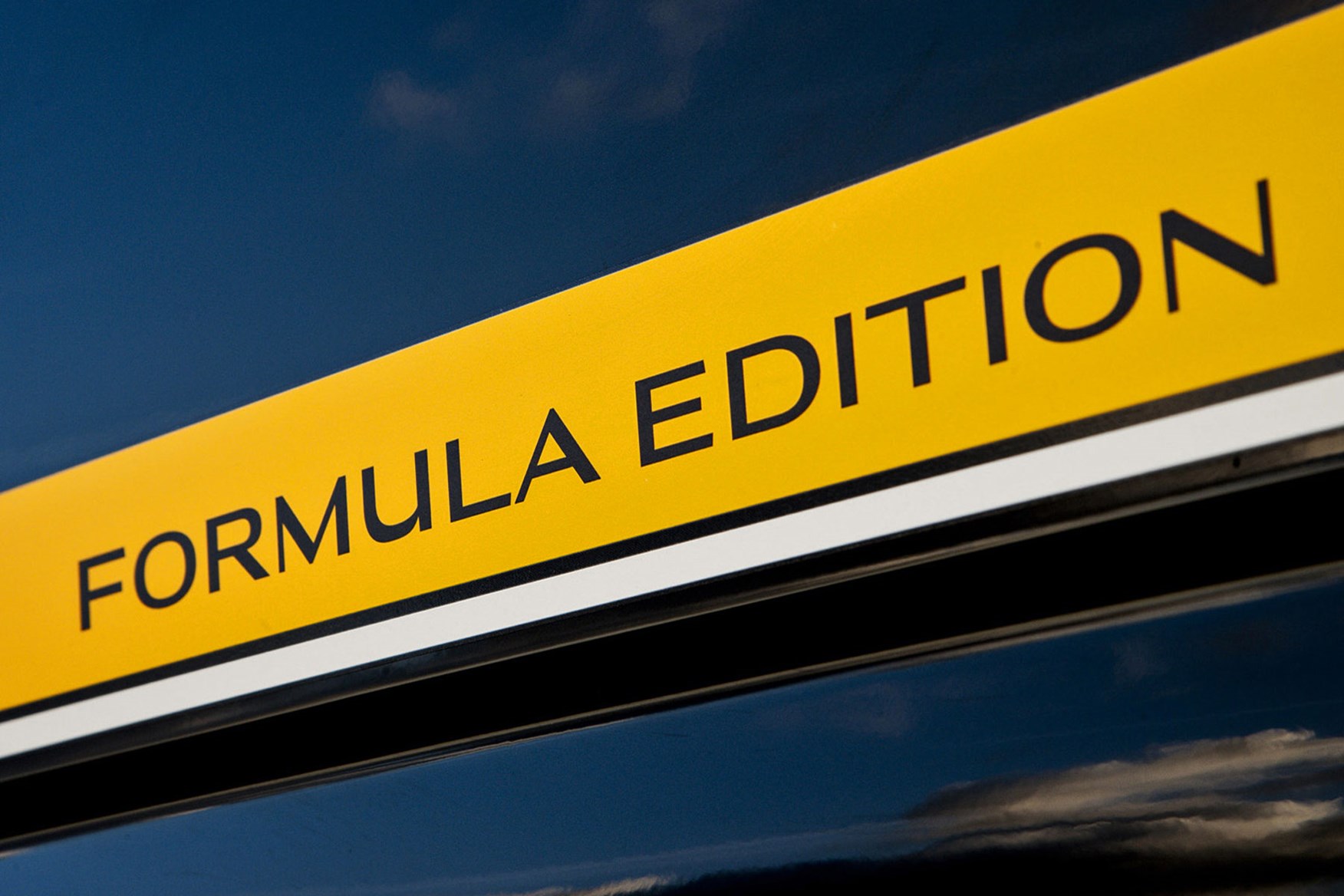
Our test of the Master coincided with a period of unseasonably foul weather – yes, snow in winter – but this posed it no problem. Particularly useful is the traction-enhancing Grip Xtend function, ensuring there’s sufficient adhesion at low speeds, even when the asphalt’s slippery.
Officially, the Master will average 39.2mpg, a figure we struggled to come close to despite our best efforts. Our tally was closer to 30mpg for motorway driving and 33mpg around town, with the benefit of the stop/start system kicking in.
This one had the optional 105-litre fuel tank (an extra £100), so at least you won’t have to fill up too frequently.
Comfortable cabin
Spending over 12 hours in total behind the wheel on one particular day of our test proved to be a comfortable, ache-free experience. There’s a decent amount of adjustment for the driver’s seat and the position of the left-sided armrest didn’t impinge on using the gearlever.
A couple of option packs caught our attention in particular. For £420 the Master can be fitted with Renault’s sat-nav infotainment system, while £330 brings you a reversing camera.
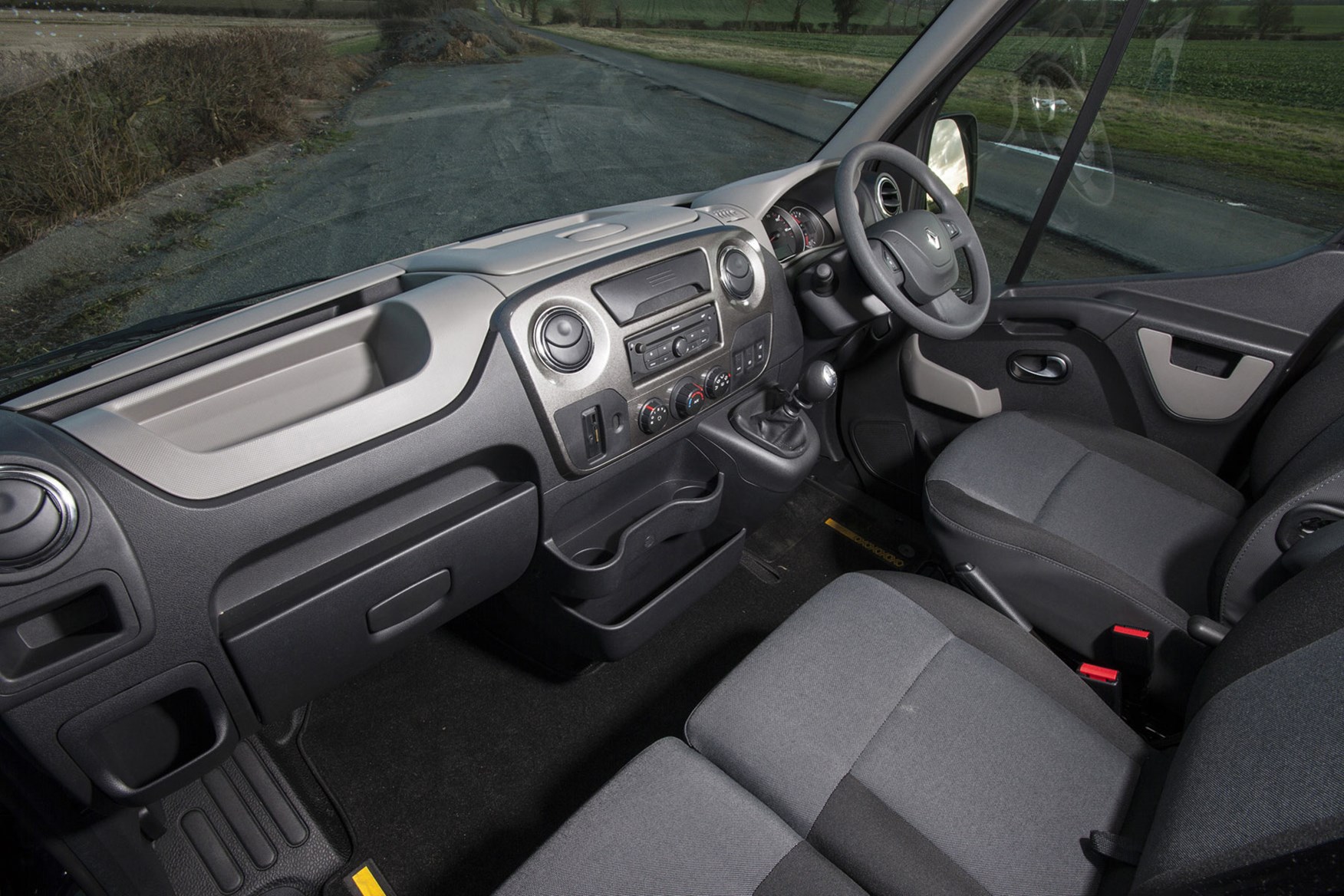
It's a shame that the safety pack seems to no longer be offered, with the various features split up to be individual options. The lane-departure warning (£435 on Start, £120 on Advance) is very useful, particularly as road grime has a tendency to gather on the quarterlight windows on the doors, requiring frequent wipes to keep the mirrors visible.
Disappointingly the automatic main beam system wasn’t as slick – it picked up oncoming cars quickly, but wasn’t sensitive enough to notice tail lights of cars being caught up before the driver in front was dazzled.
Should I buy a Renault Master Formula Edition?
Against an onslaught of newer rivals, that the Renault Master is feeling a tad old is of little debate.
That doesn’t mean you should write it off, though. The cab’s comfy, the ride quality when laden is decent and with the dCi 170 diesel it’s punchy yet remains economical.
Much of the kit the Formula Edition’s got is available on the Business+ version of the Master, a model that’s £1,000 less than the £33,150 (ex VAT) of our test example with subtler looks. But if it’s a sporty vibe in a big package you’re after, this Renault’s the place to be.
Renault Master LM35 dCi 165 FWD review
Tested June 2015 by Liam Campbell
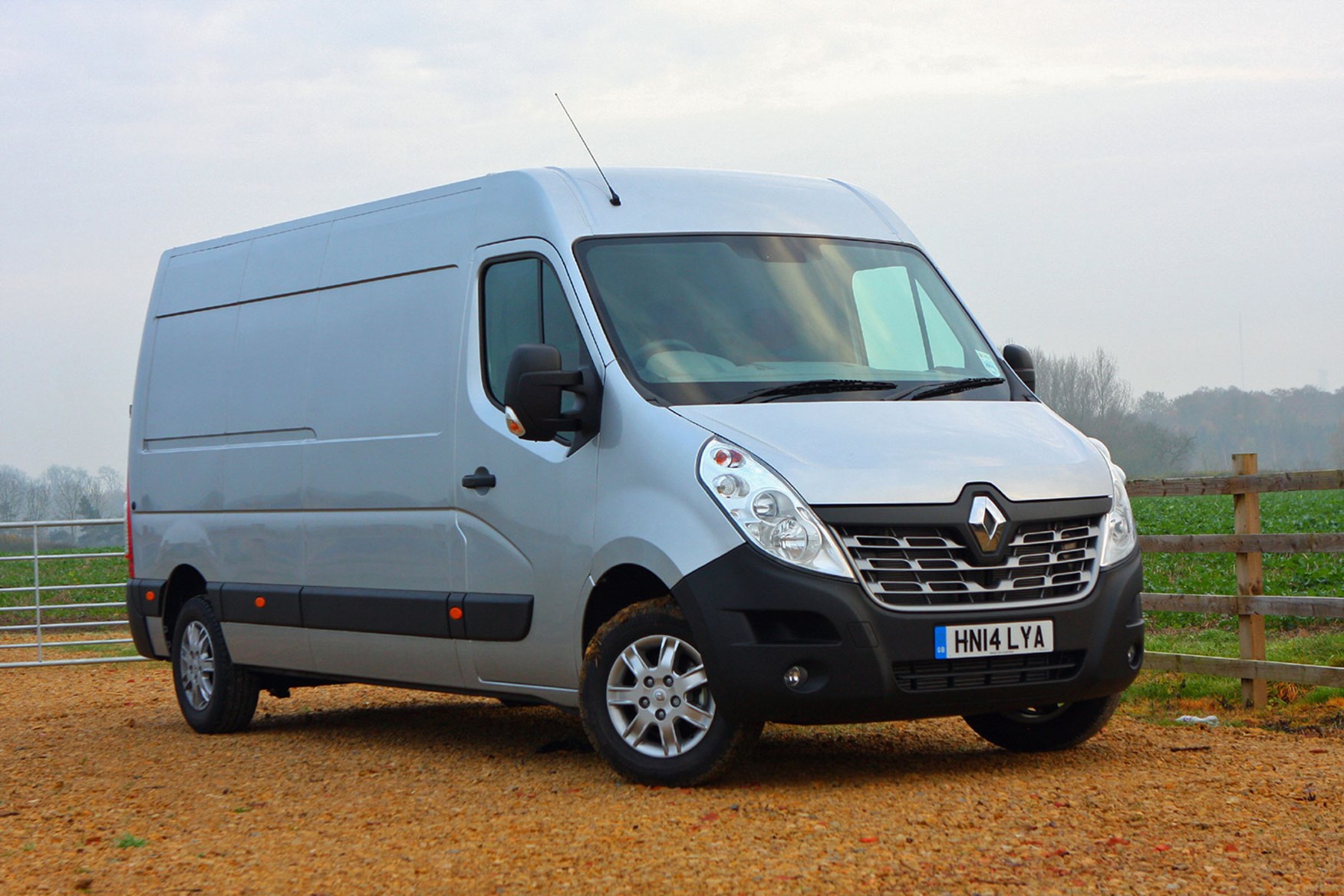
- Up to 40.9mpg on the combined cycle
- Poor ride and lots of cab noise
- Comes with Renault’s great four year warranty
The Renault Master has consistently been one of the top five best-selling vans in the UK over the past 10 years thanks to its low retail price, excellent warranty and productivity. One of its traditional weaker points, fuel economy, was improved over the summer and we put one new example, the 165 Energy, to the test.
Loading capabilities
The Master’s relatively low kerbweight means it has the upper hand in the 3.5t market. Payloads have suffered in recent years due to the increased size of modern vans and the array of safety equipment, but the 1,530kg payload is one of the best in class for today’s vehicles.
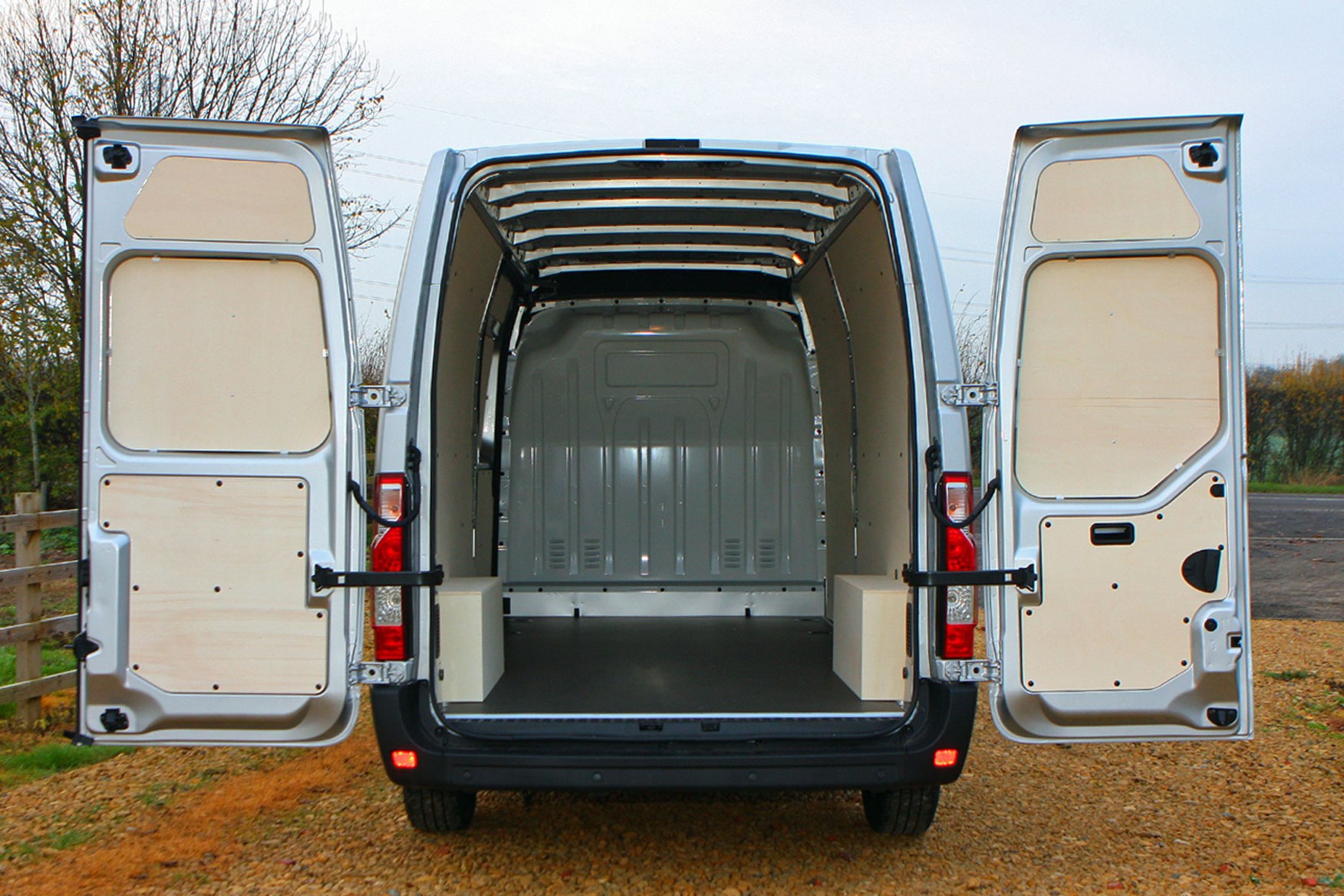
For full details of the Master's load area, see our dedicated dimensions page.
In the cab
One of the first things that strikes you as you enter the cab is the visibility. The raised driver’s seat and low sitting windows provides good all round vision, which is a common criticism of mine for vans of this size.
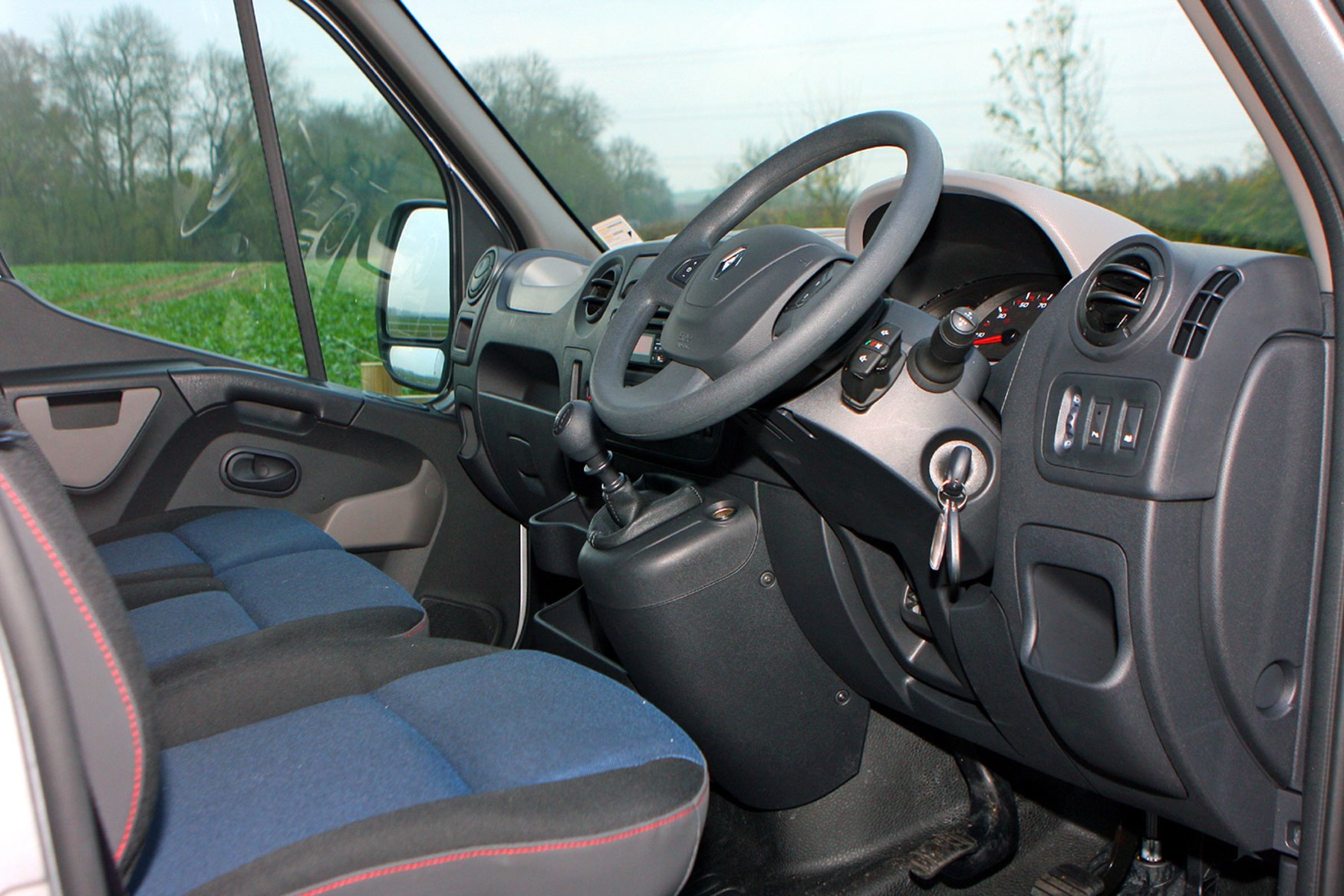
The dashboard and controls are neat and functional, if a little dated, and the adjustable driver's seat comes with an armrest and lumbar support. The new DAB radio, which is a standard feature across the range, comes with Bluetooth, a CD player and USB connectivity.
On the road
Refinement is one area where the Master falls short of many of its competitors. The likes of the Mercedes-Benz Sprinter and Volkswagen Crafter have long been the leaders in this aspect, but whereas the Ford Transit and the Sevel vans (Fiat Ducato, Citroen Relay and Peugeot Boxer) have made respectable gains, the Master and its siblings are still a rough ride.
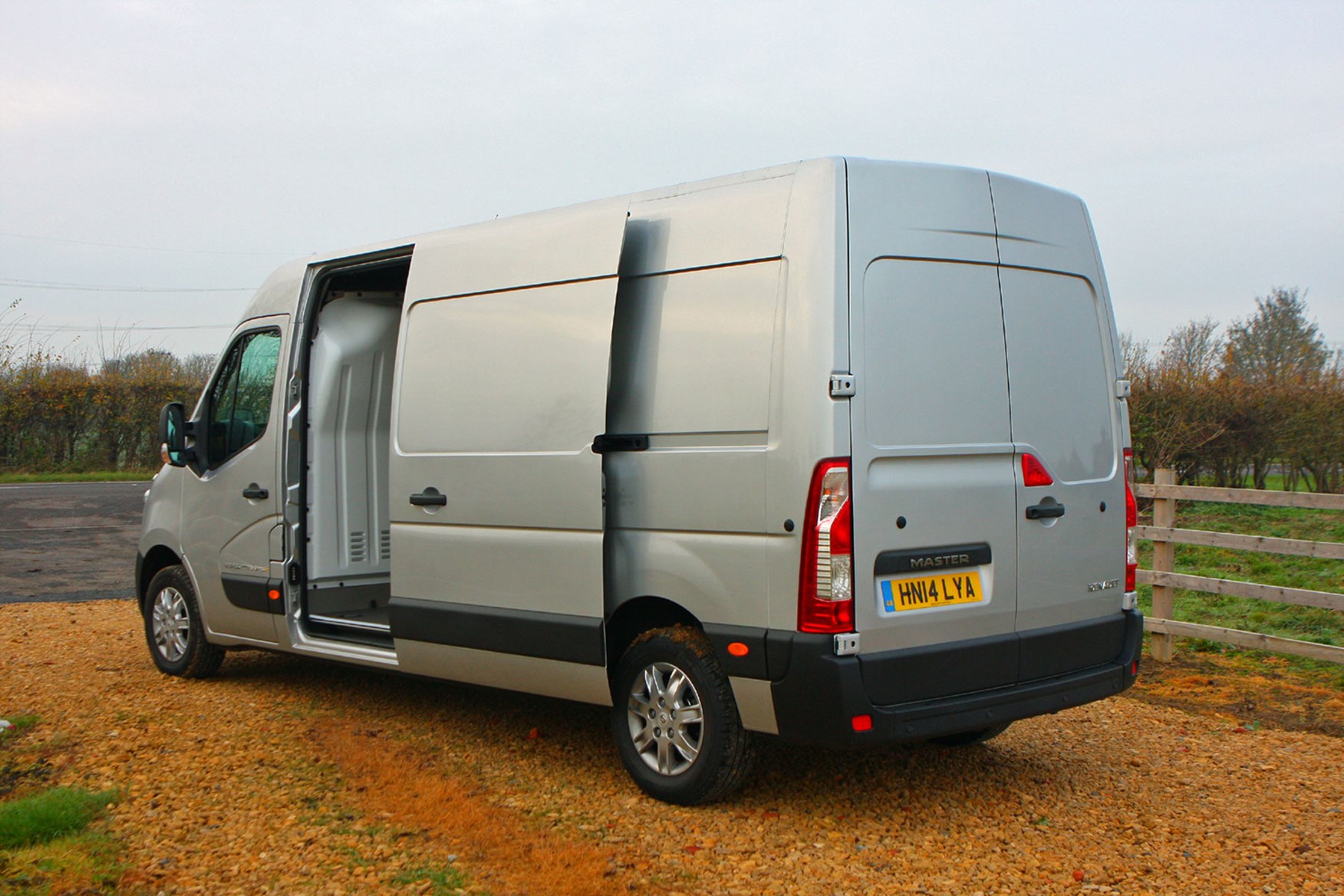
Noise from the engine and road perforates the cab far more noticeably than its competitors, while the gearbox is clunky and harsh. The suspension does a poor job of cushioning the blows from the road and slight bumps will ‘shudder’ the cockpit. The steering, however, is precise and provides good feedback.
The engine is powerful and the Master easily pulls away from traffic lights, even when weighed down with a heavy load in the back. ‘Energy’ engines feature stop/start technology and other energy-saving devices to help achieve a combined fuel economy figure of 40.9mpg.
Sales and aftersales
This particular variant of Master retails at £29,070 excluding VAT. All new vehicle sales include Renault’s fantastic four year, 100,000-mile warranty, the first two of which are unlimited, and four years’ free servicing. Service intervals are set are two years or 25,000 miles.
All prices and warranty info correct at time of writing in 2015



